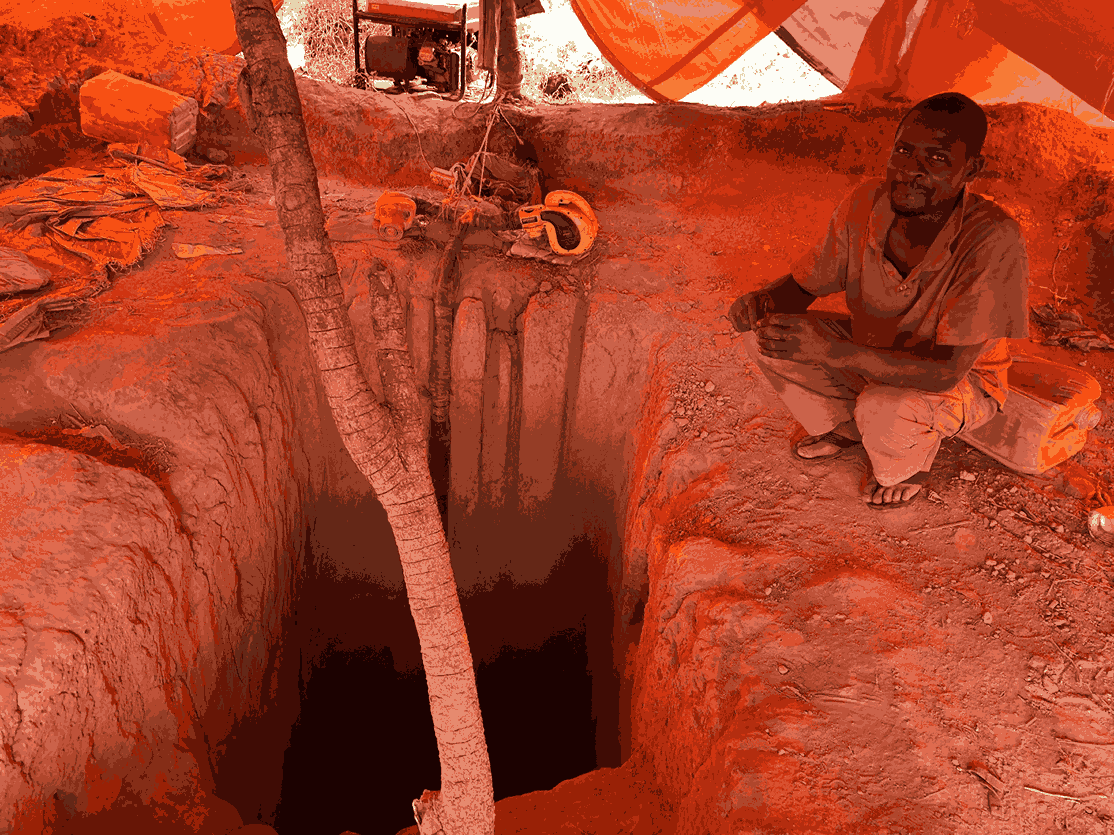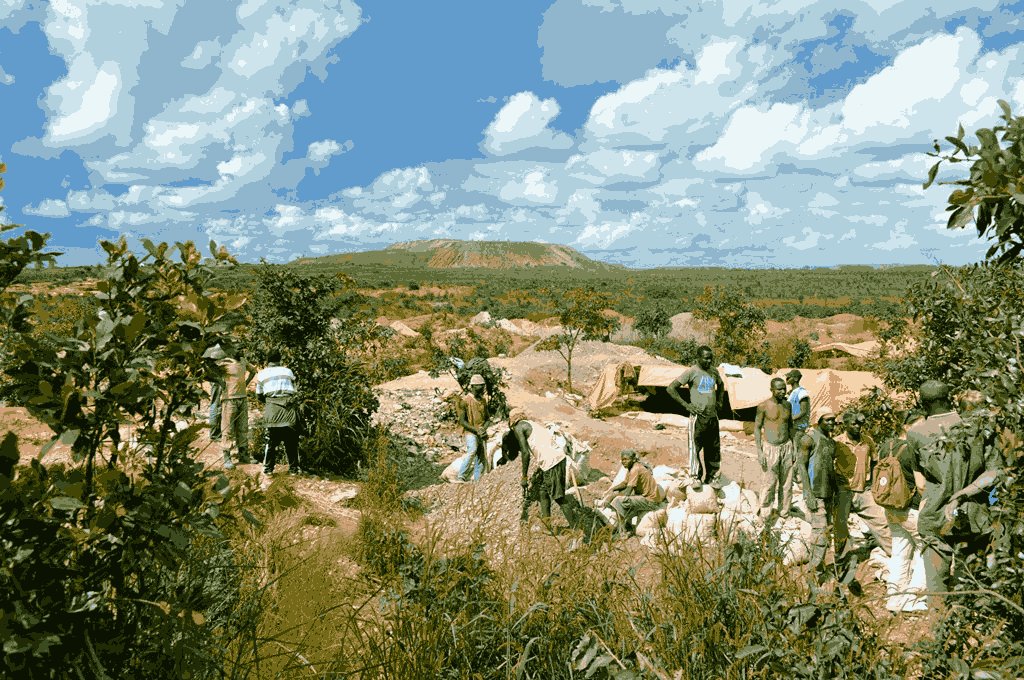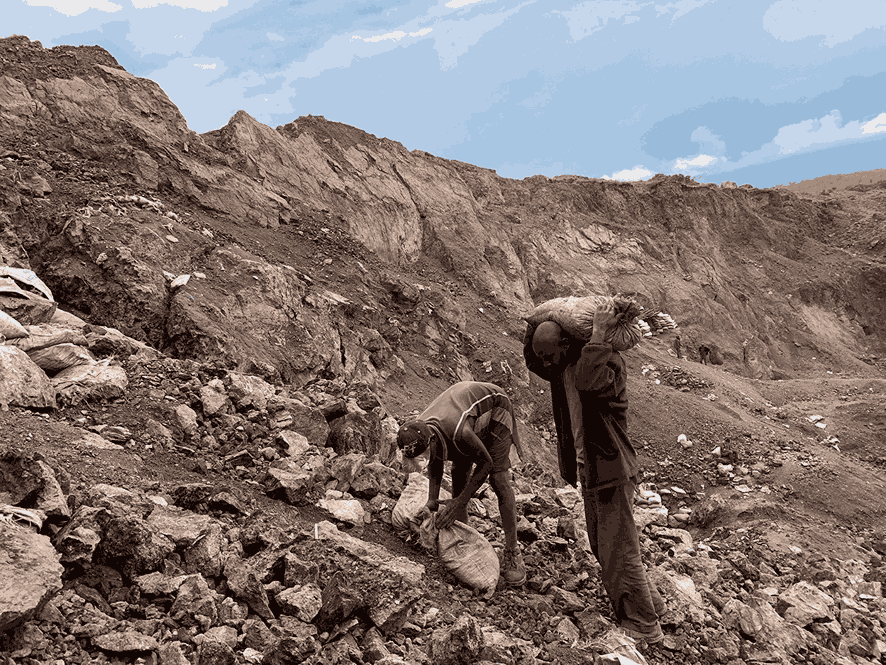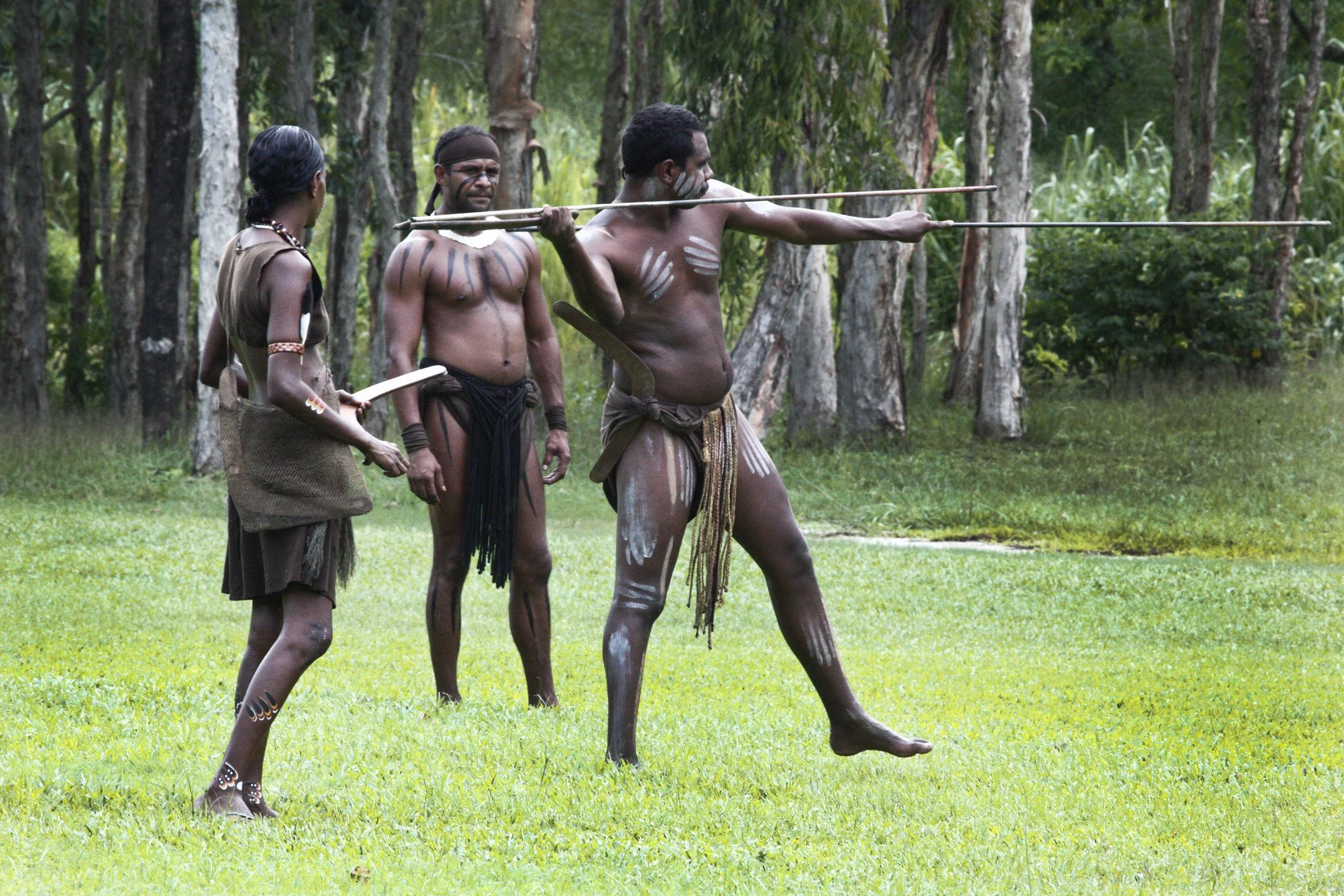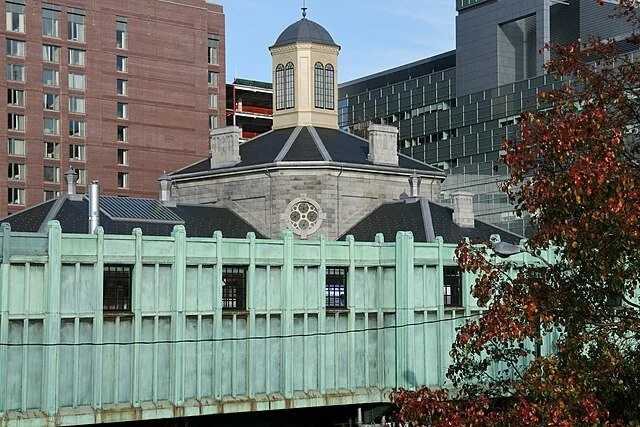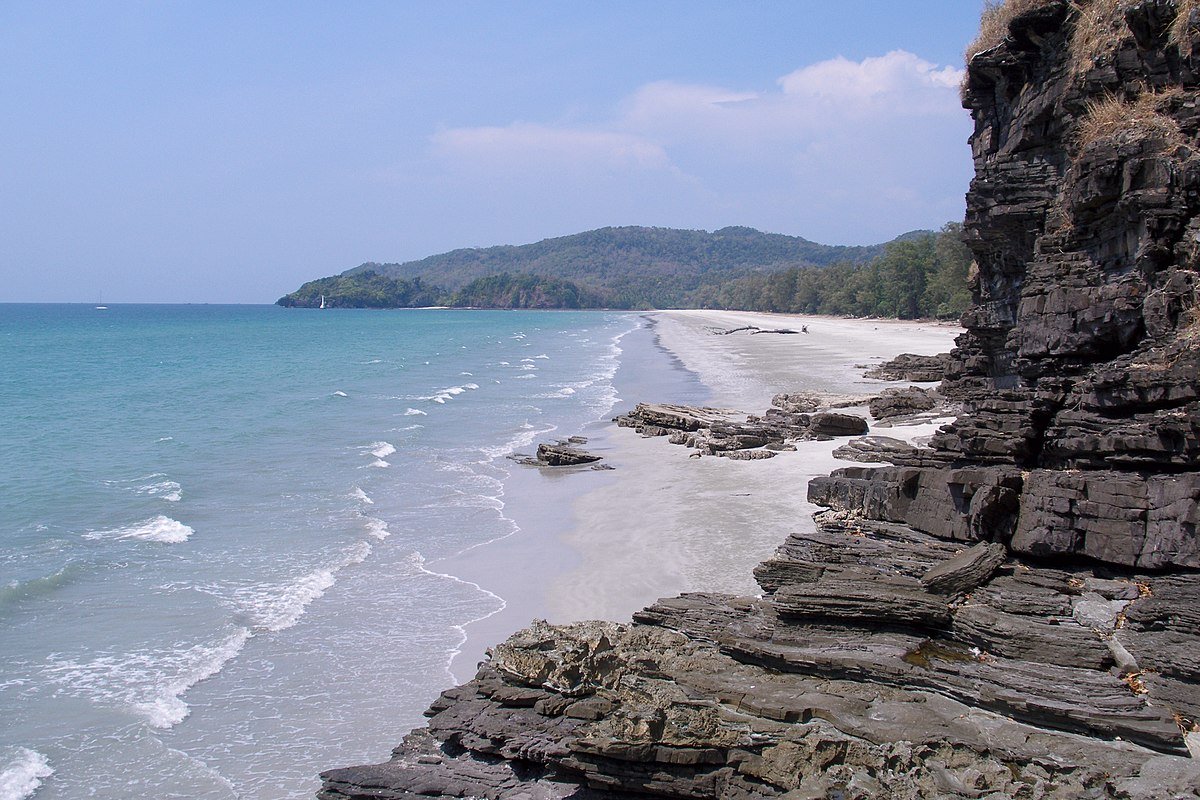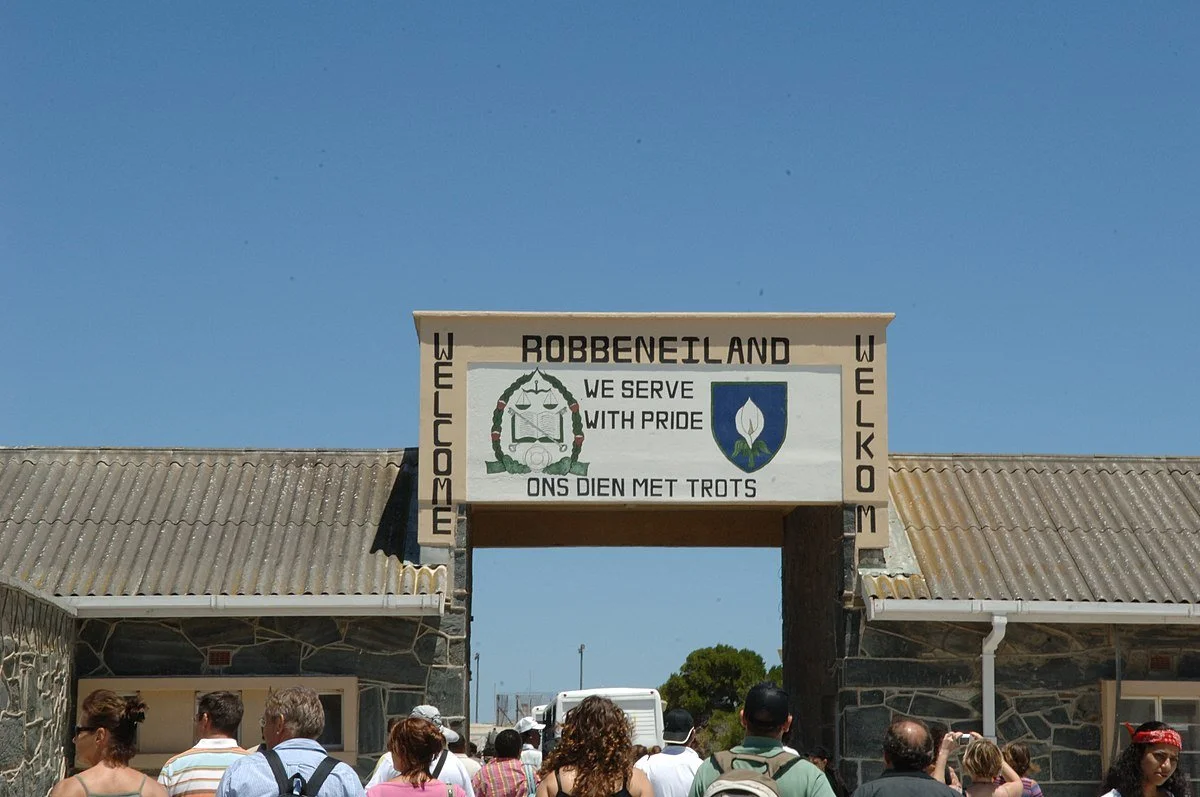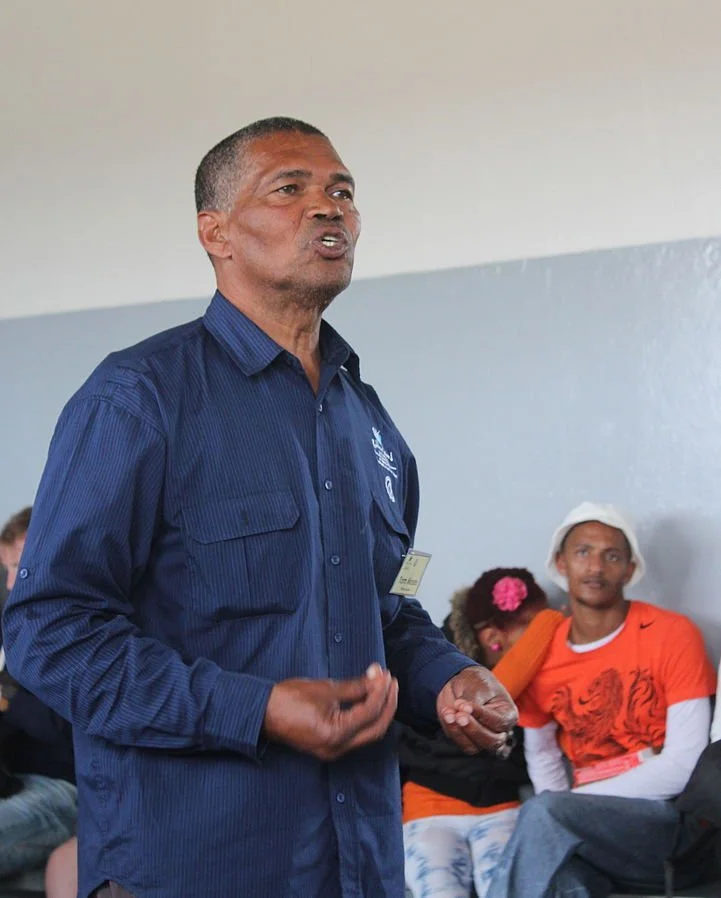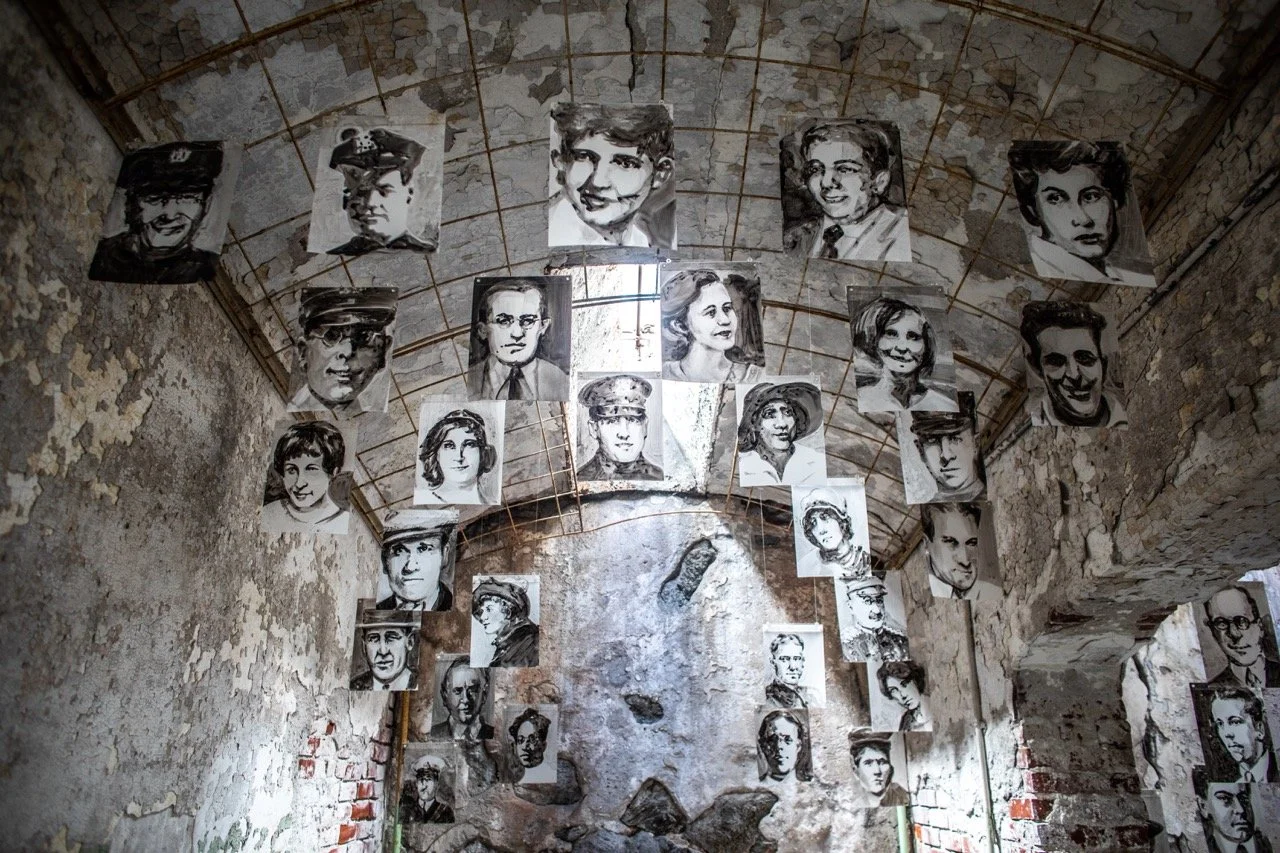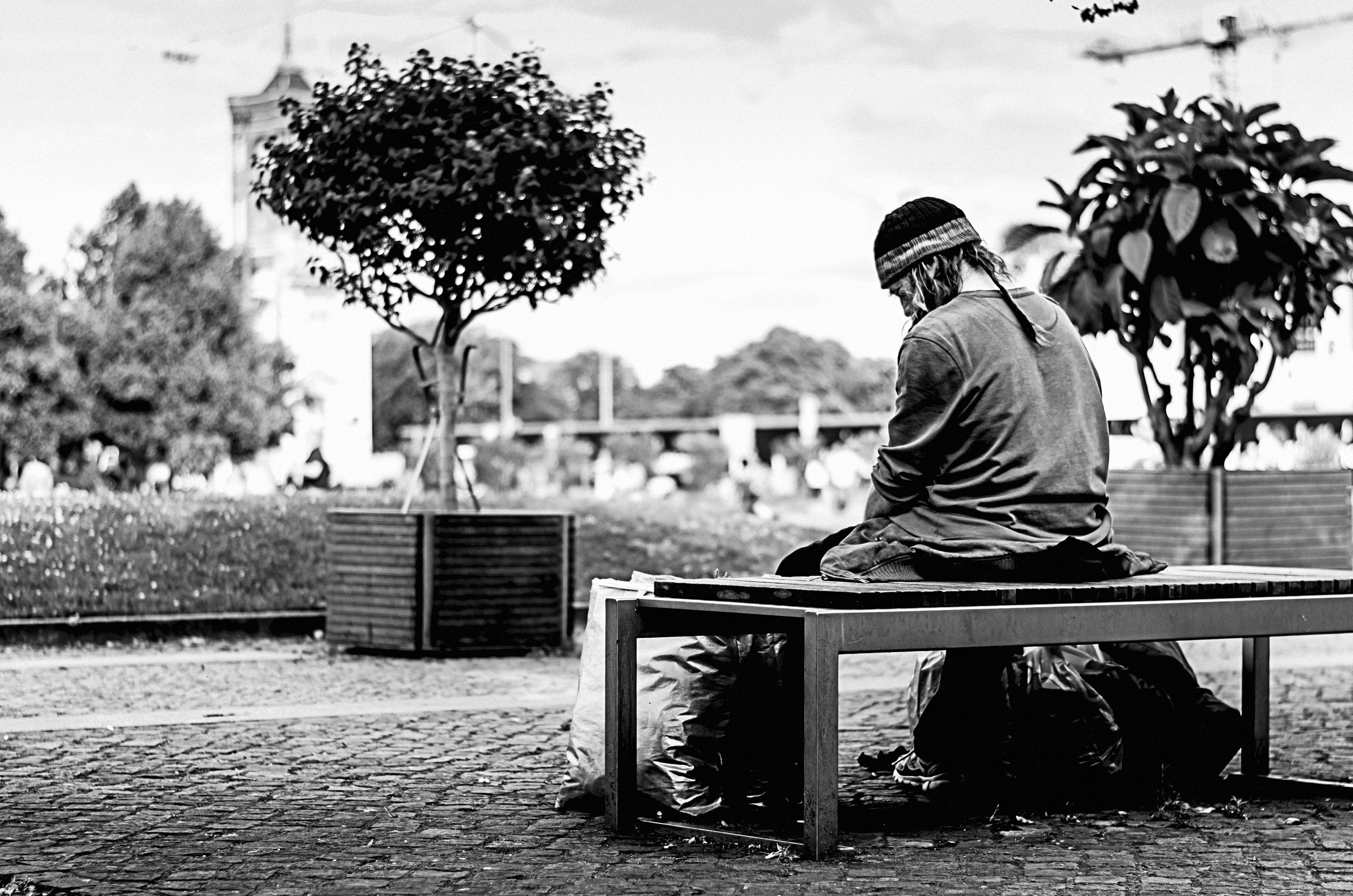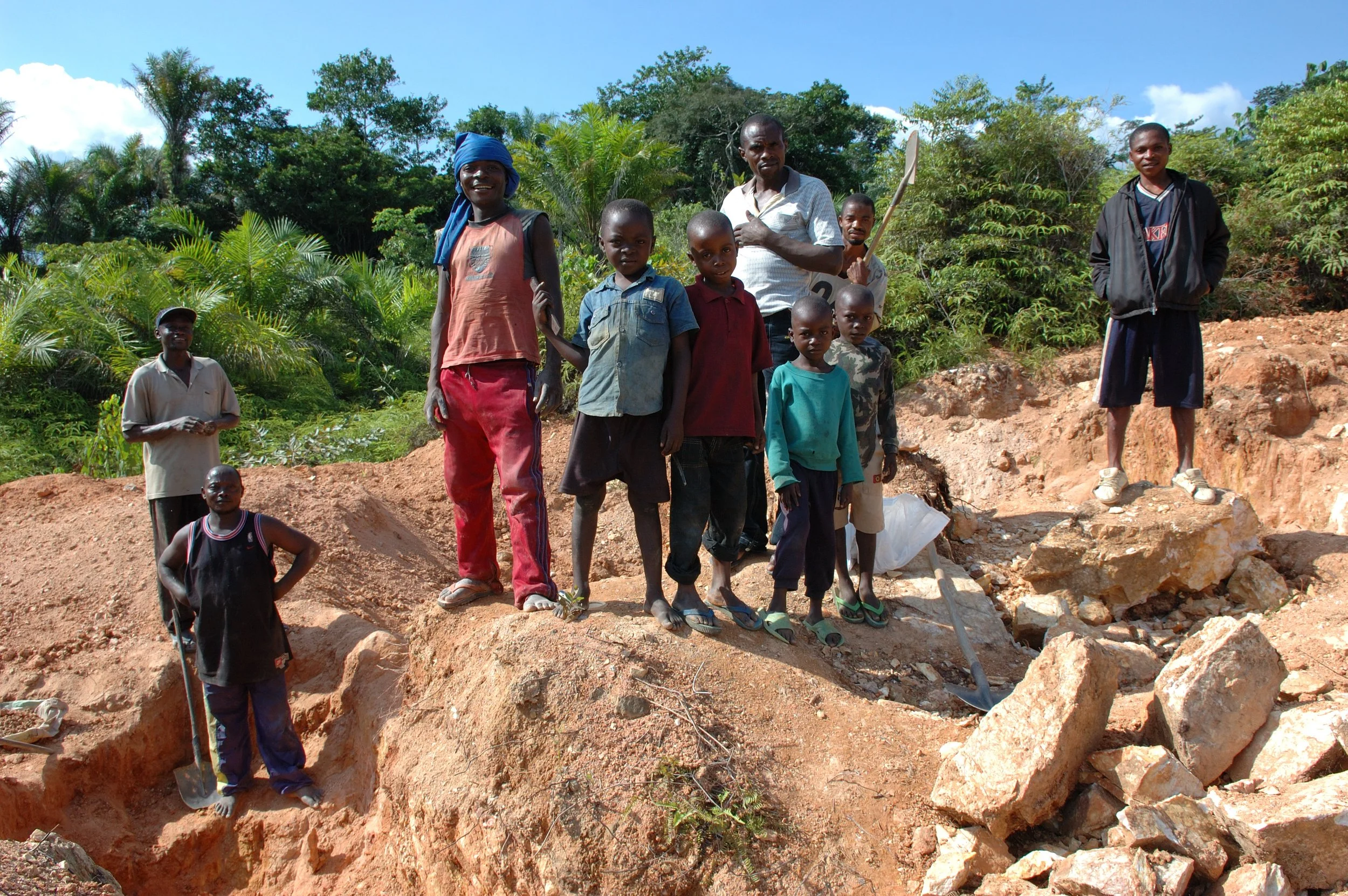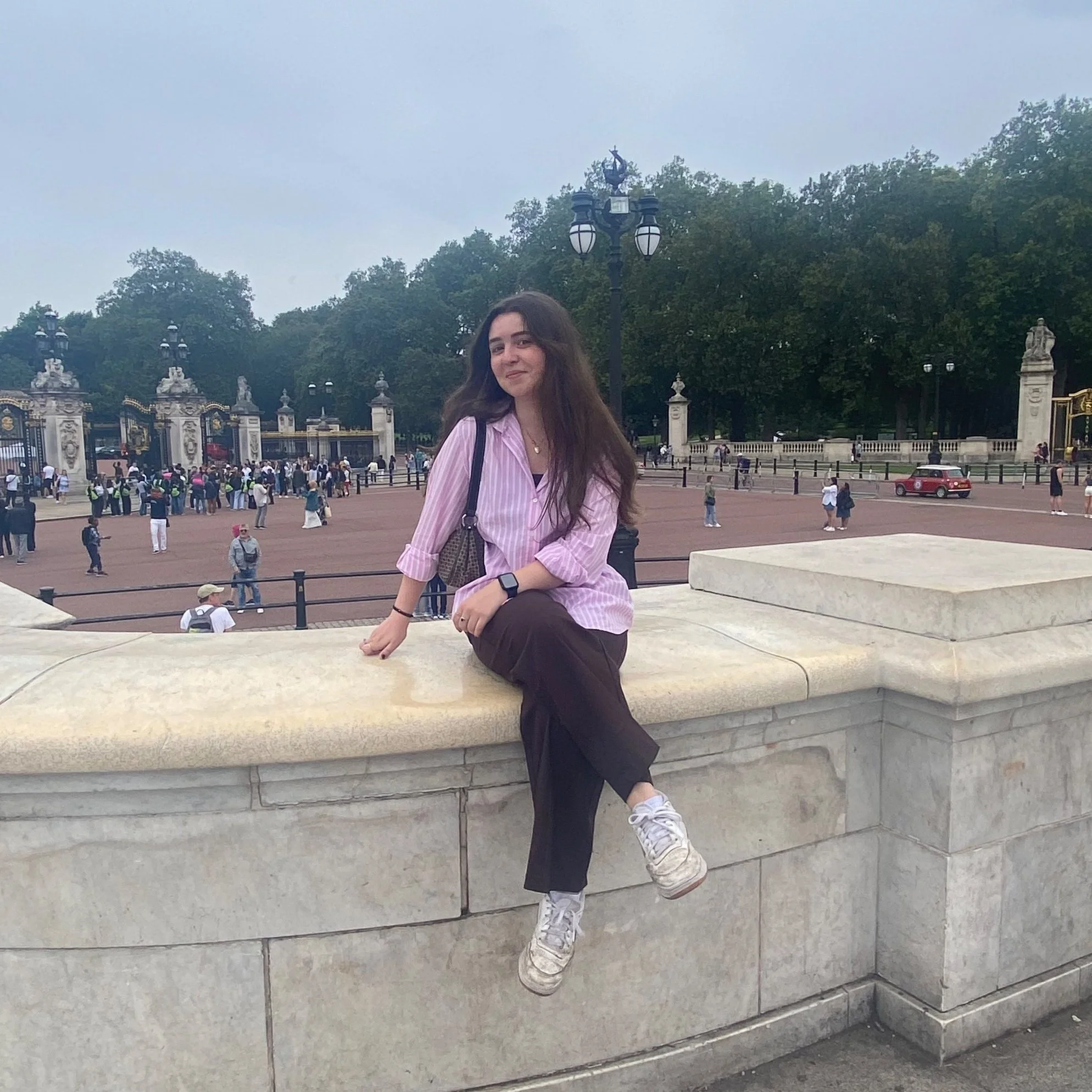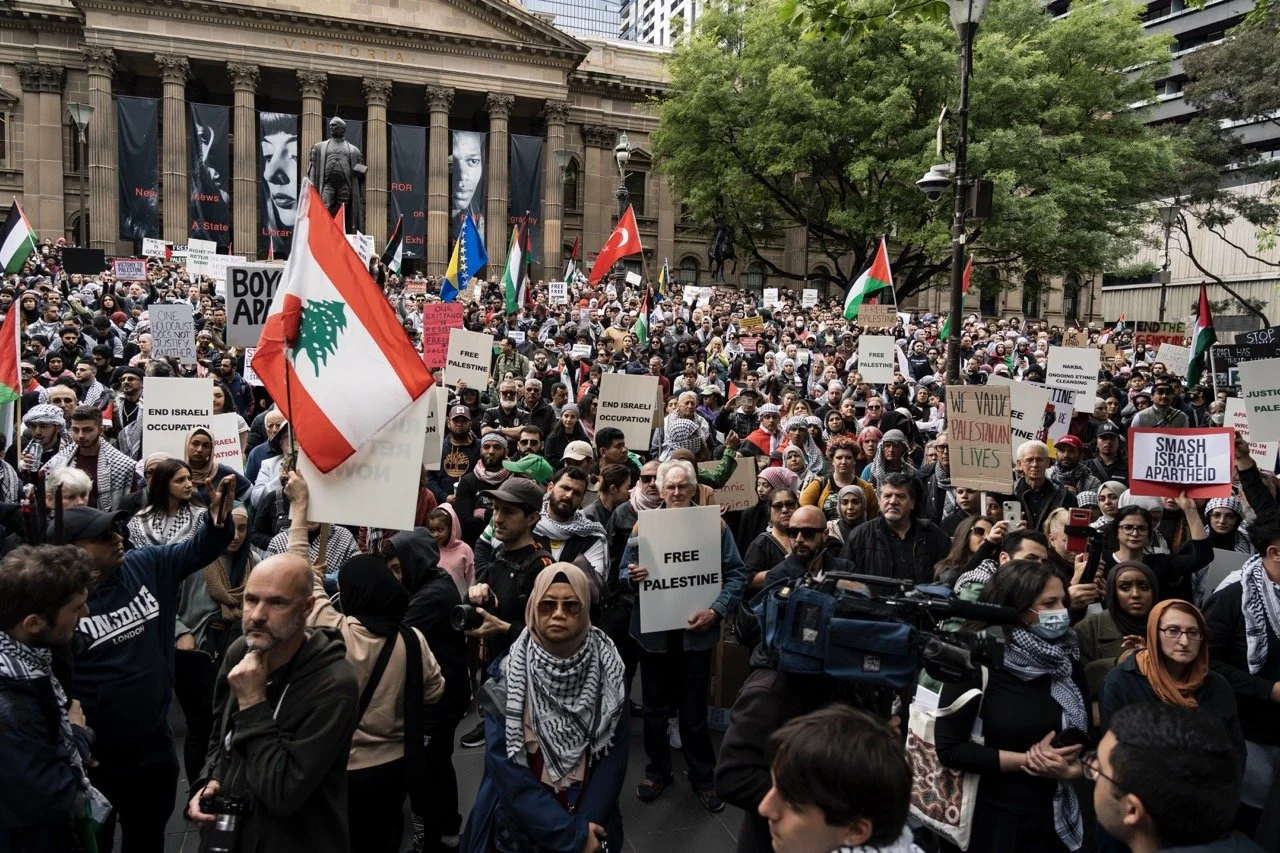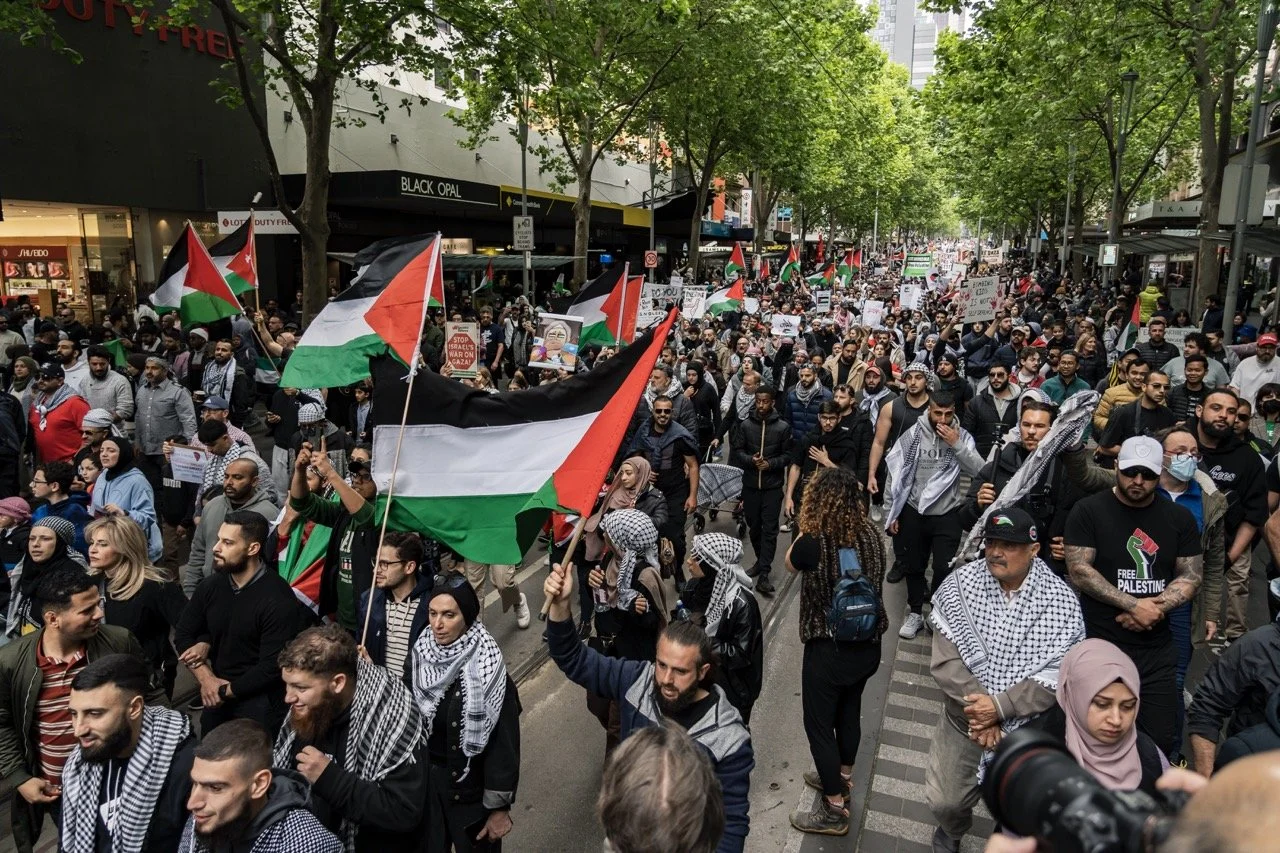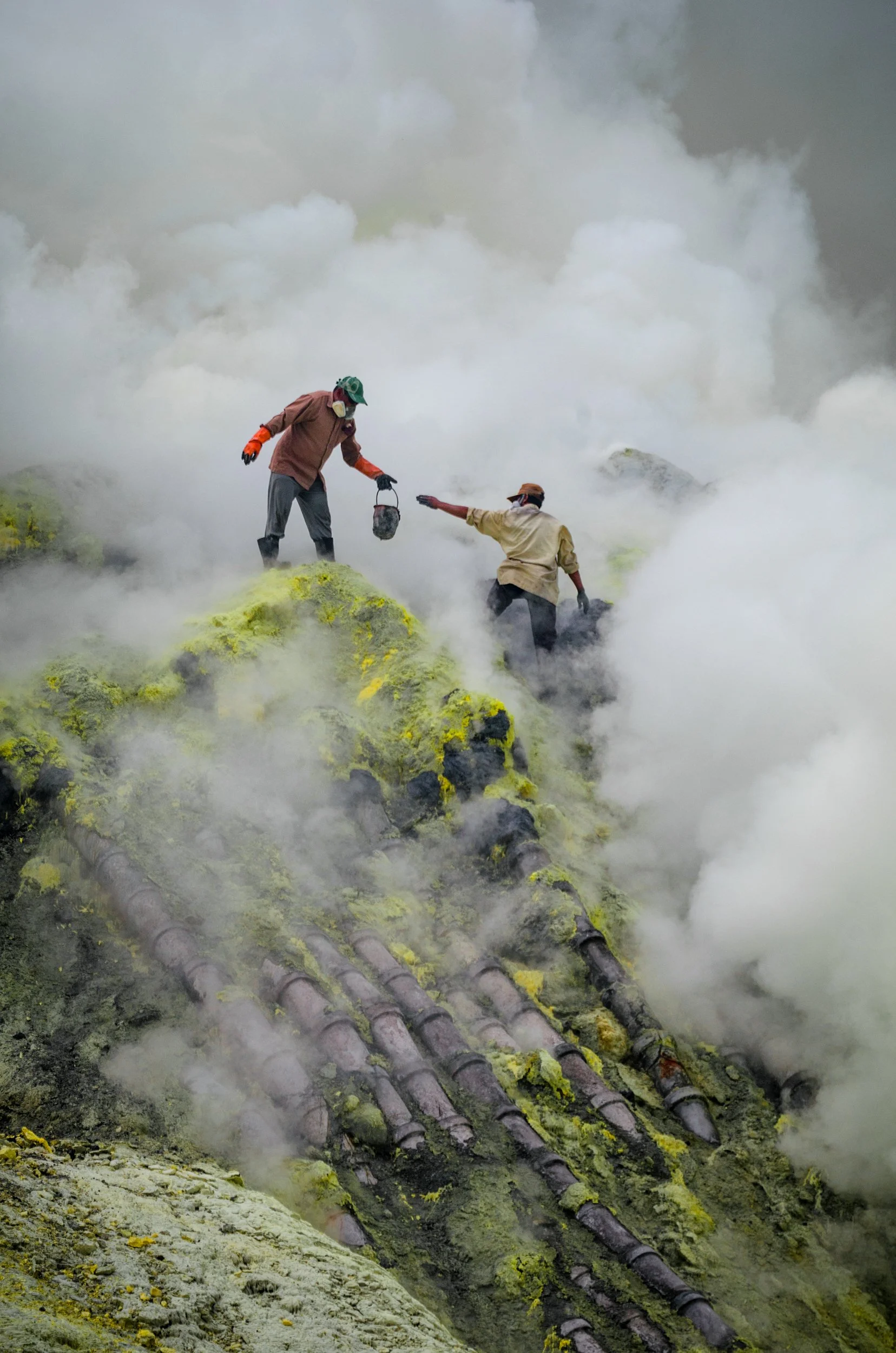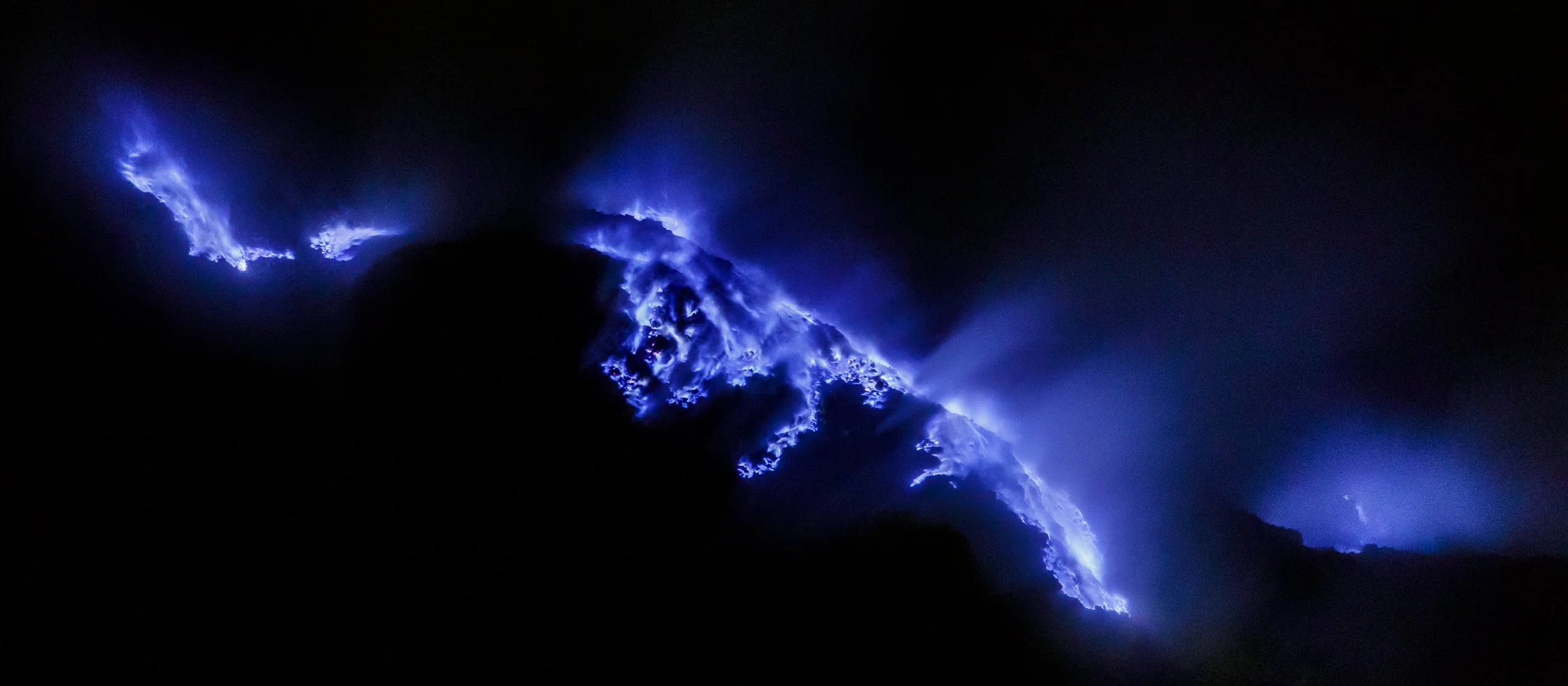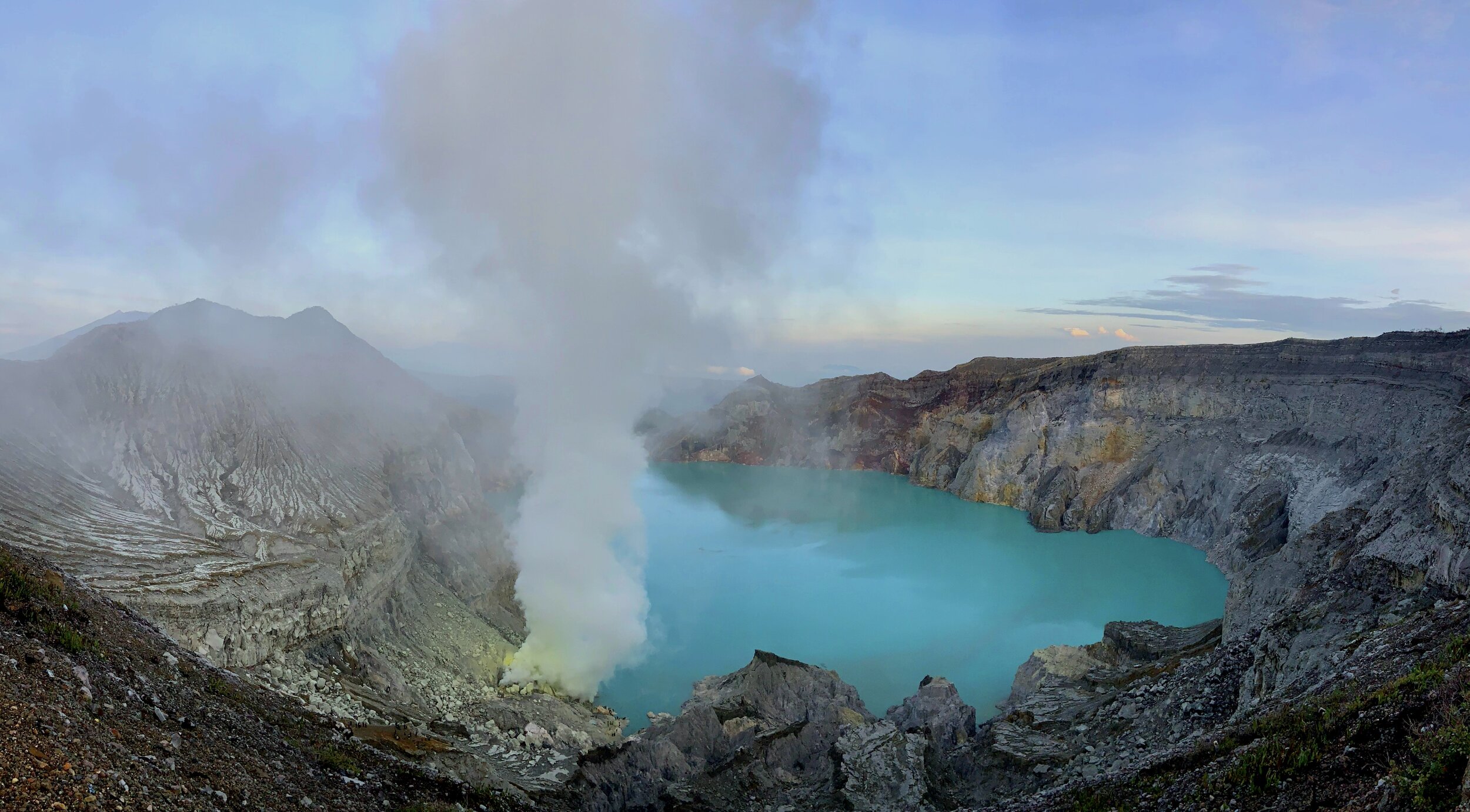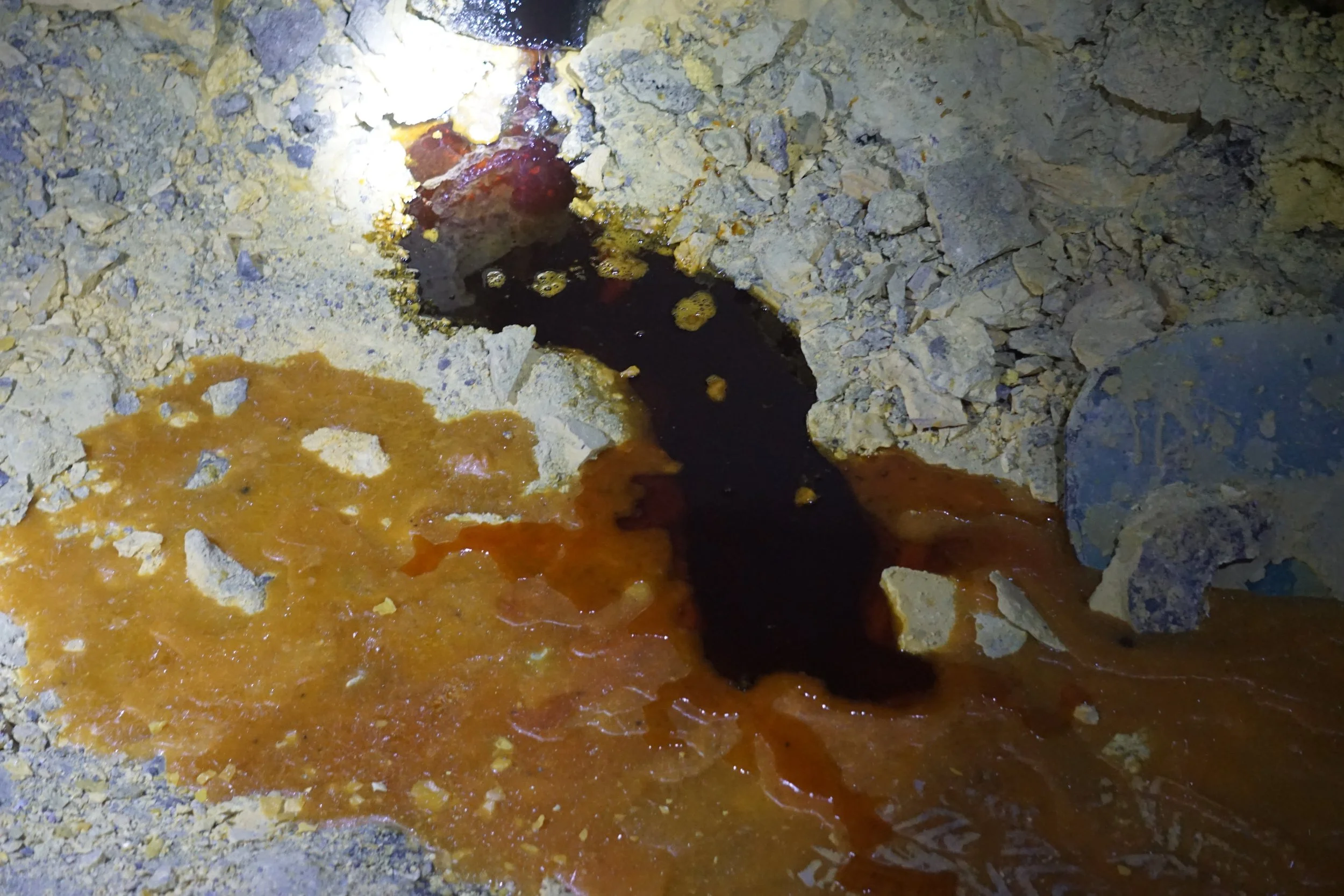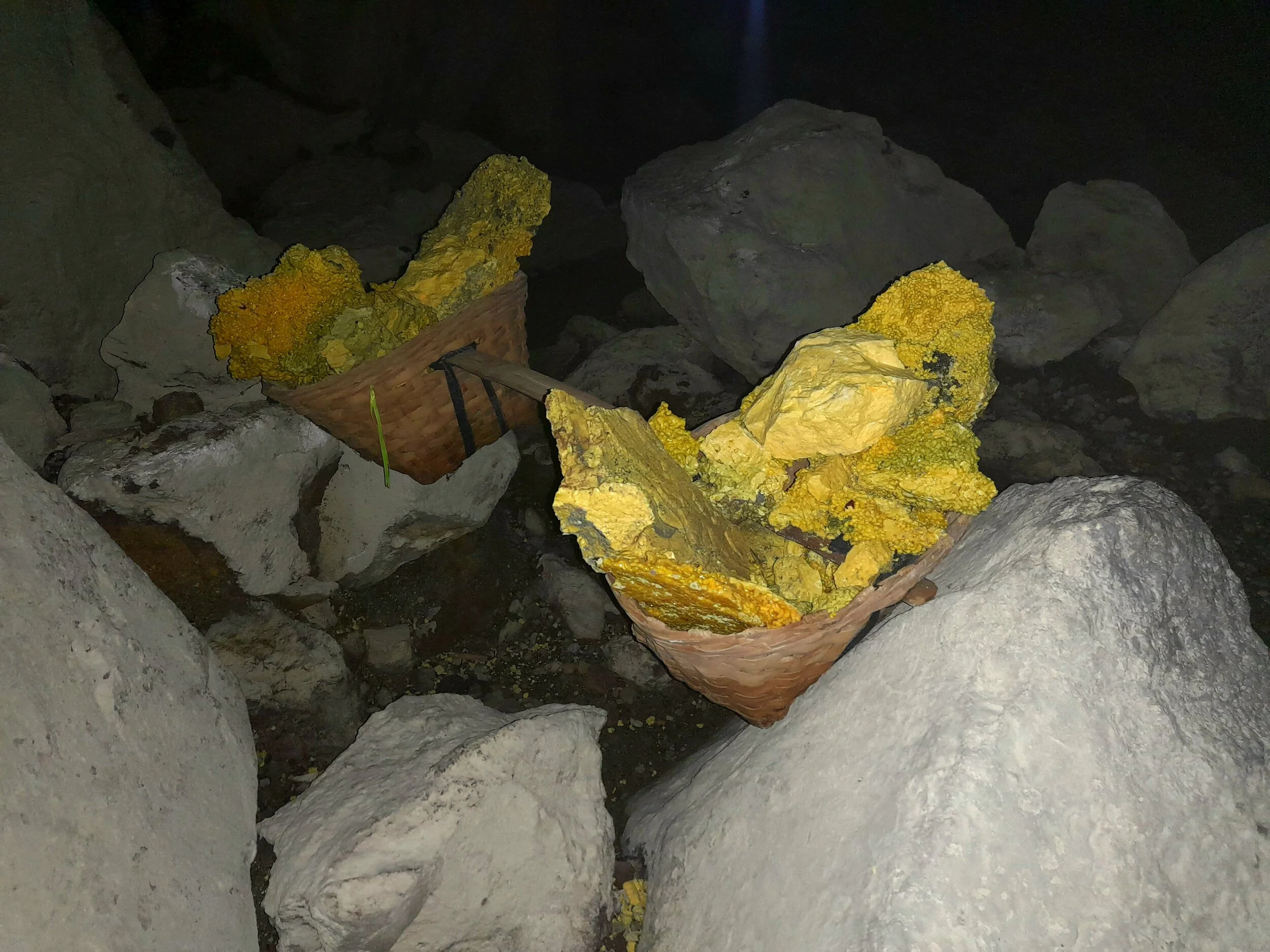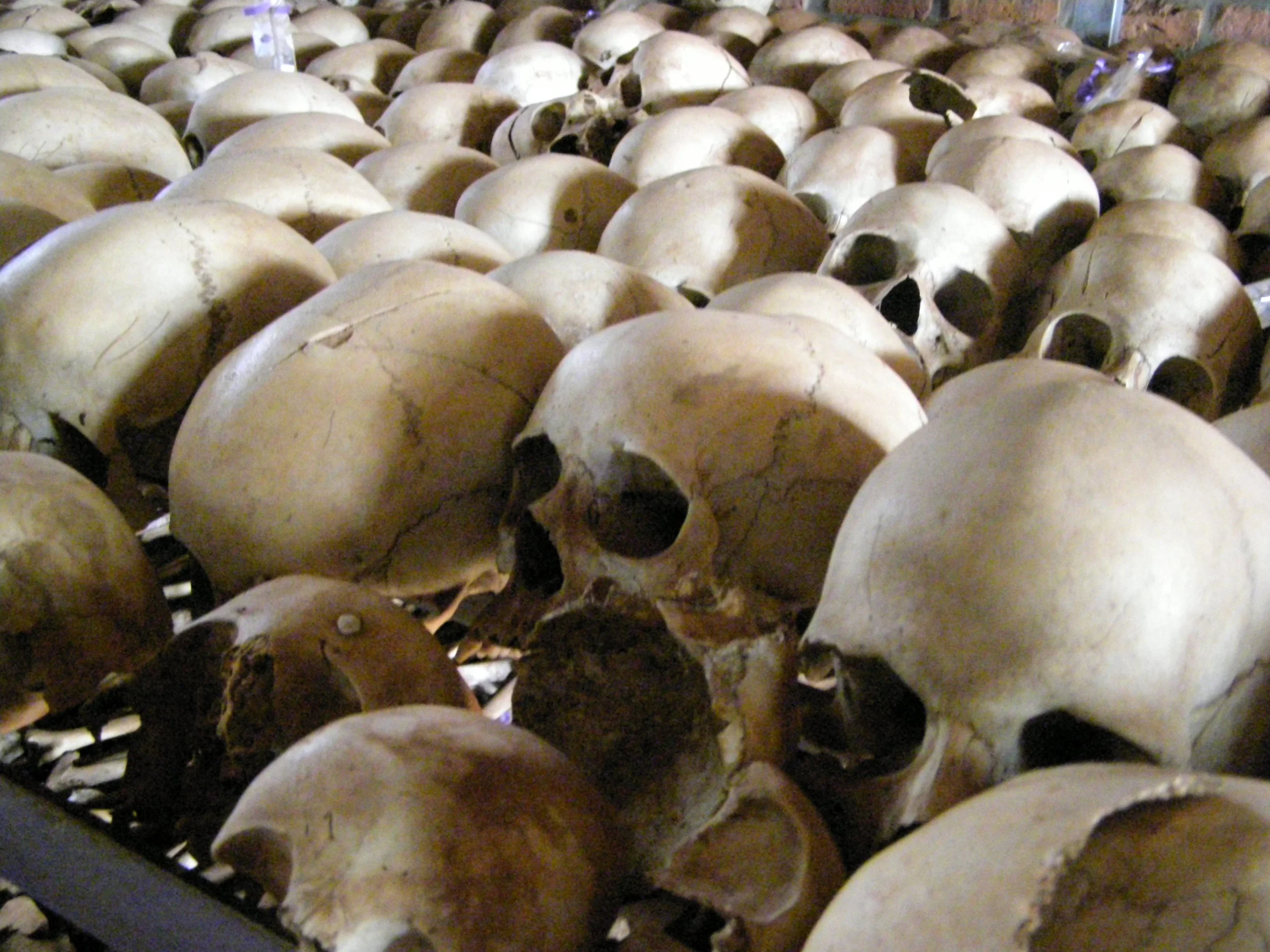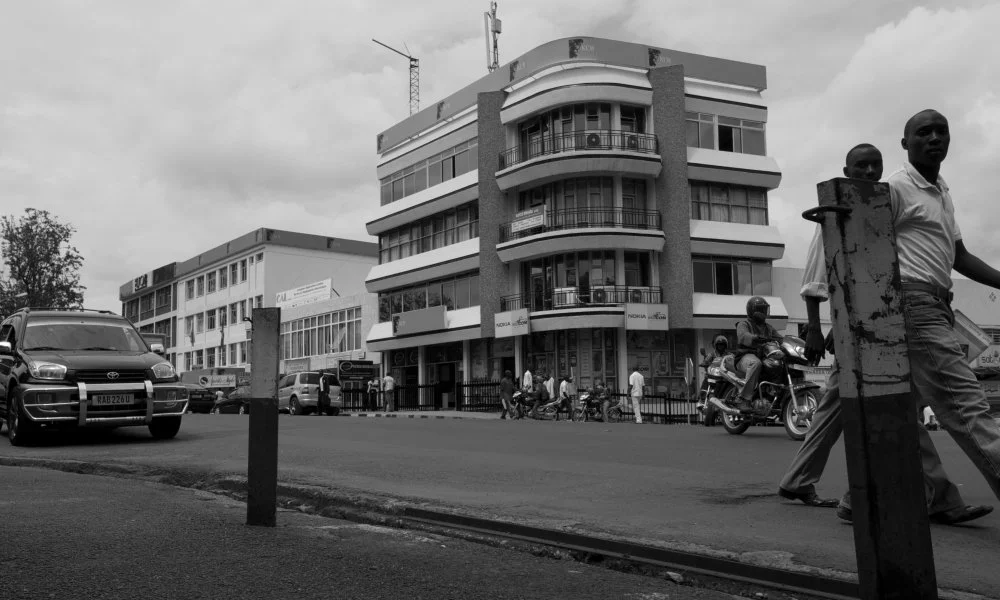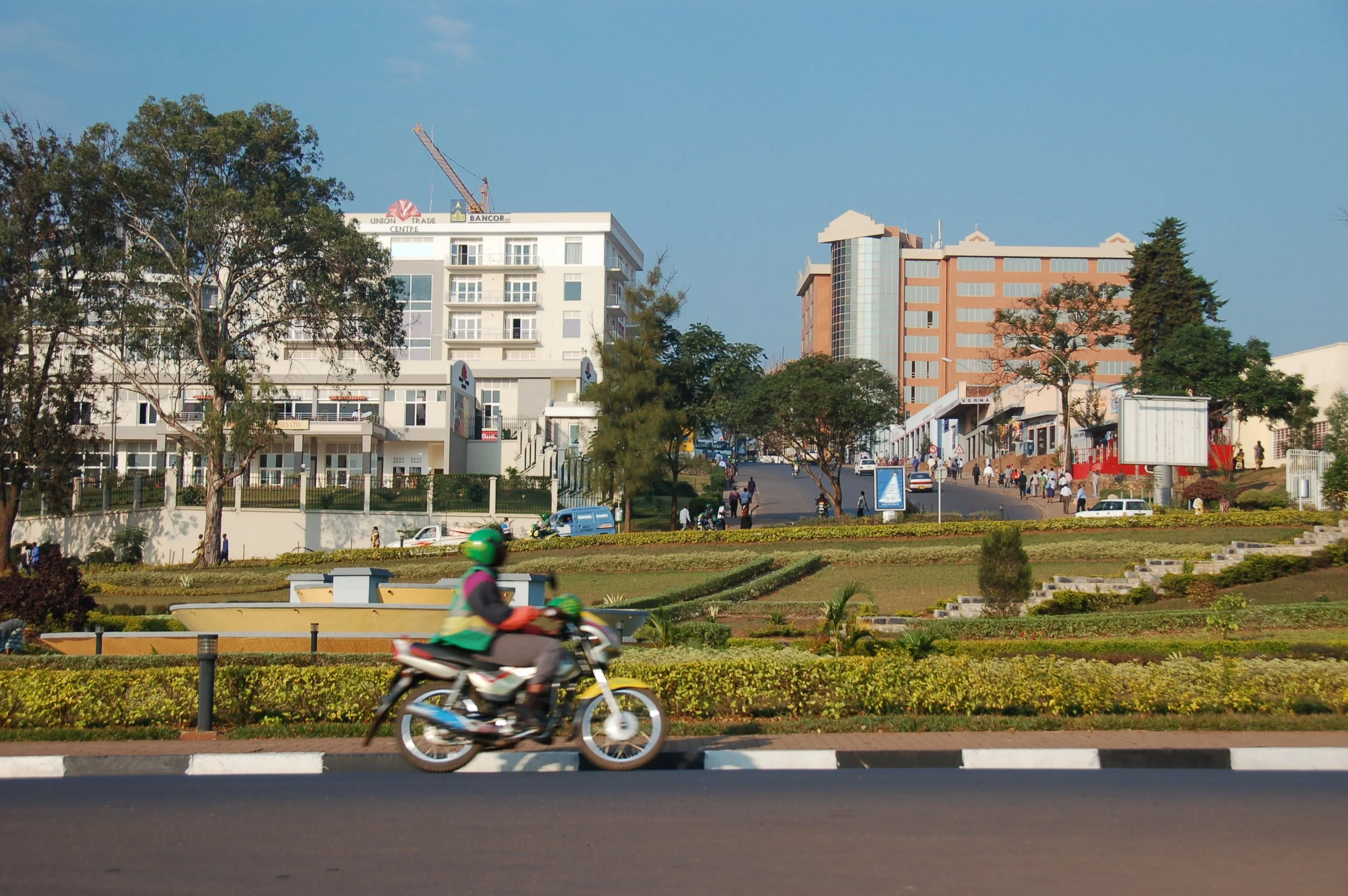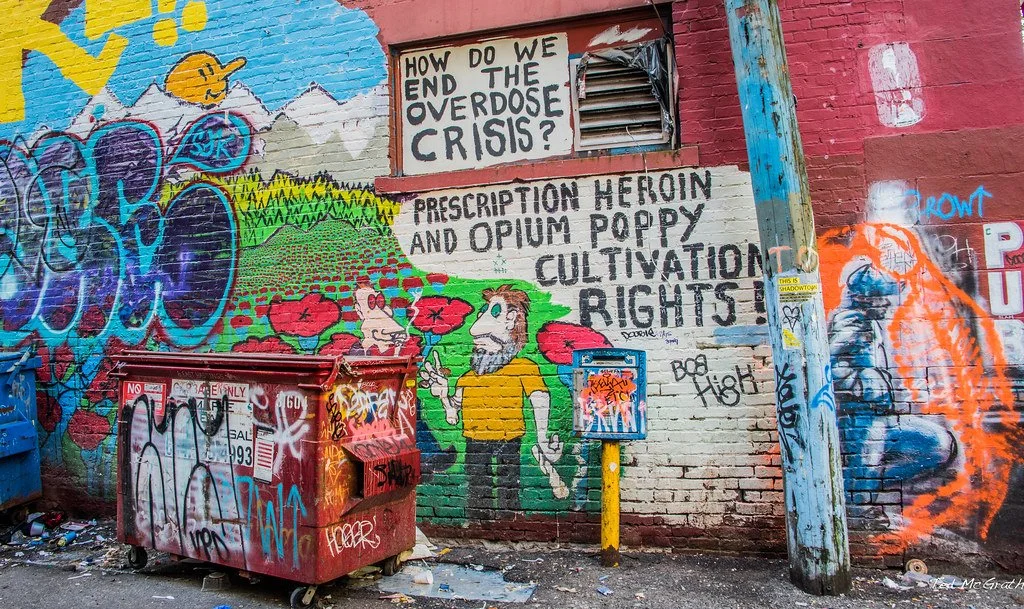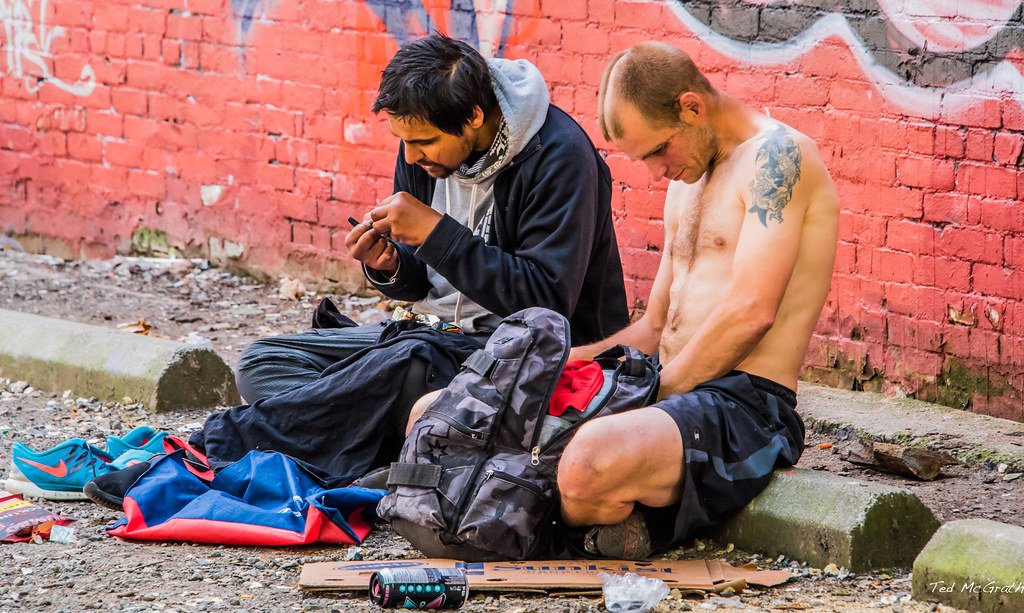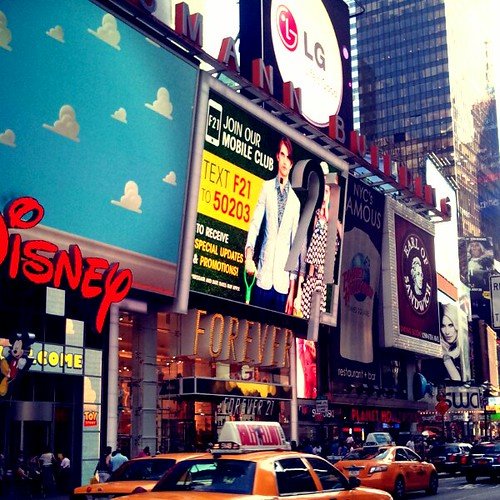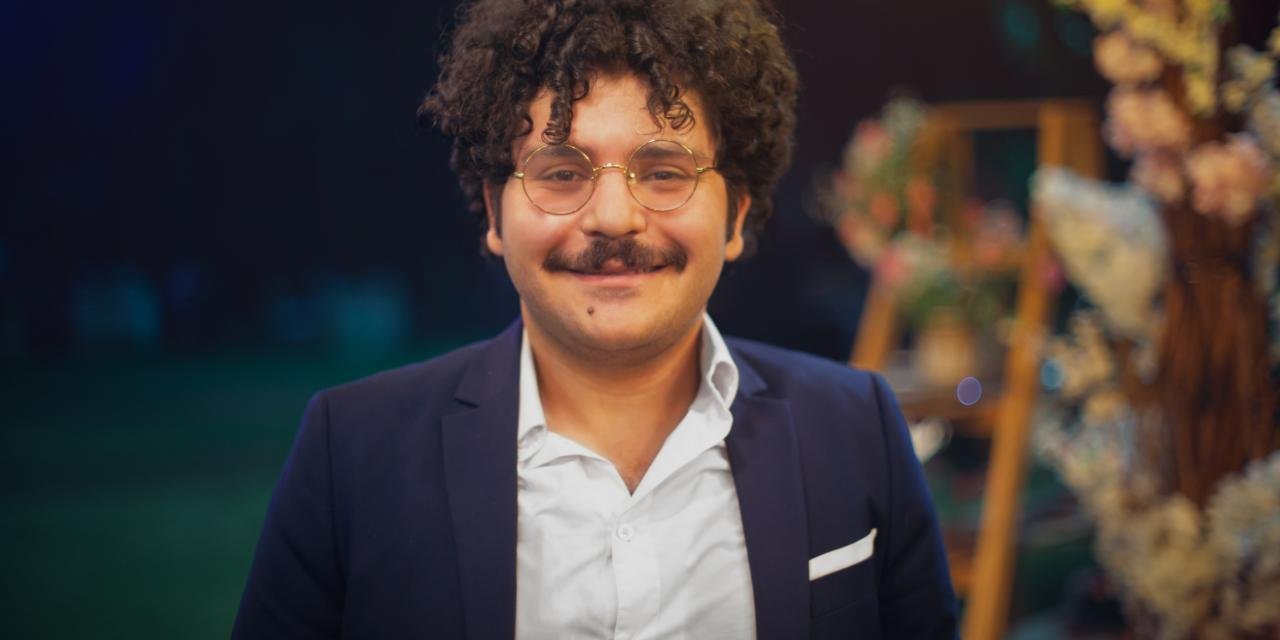Uyghur people in China are subjected to forced labor in the seafood industry, enduring brutal conditions and human rights abuses on fishing vessels and in processing plants.
Read MoreColombia: The Deadliest Nation for Environmentalists
Colombia remains the deadliest country for environmental defenders, with 79 of the 196 documented murders occurring there in 2024, largely targeting Indigenous and Afro-descendant communities.
Read MoreChild Slavery in Congo’s Cobalt Mines
The world’s high demand for cobalt mining has led to the exploitation of child labor in the Congo.
Read MoreThe Human Cost of Sustainable Energy
While wealthy nations and corporations benefit from the shift to renewable energy, the poorest and most disenfranchised communities are left to suffer the consequences.
Cobalt Mine. Afrewatch. CC BY-NC-ND 2.0
As the demand for renewable energy increases, industrialized countries are racing to obtain metals like lithium, cobalt, zinc, manganese and nickel. These metals are used to make batteries, solar panels and wind turbines—technologies that will ideally enable a transition away from fossil fuels. However, procuring and processing the materials necessary to support these sustainable infrastructures comes with a price that is often overlooked: the human and environmental toll of mining these resources is anything but sustainable for communities worldwide.
Continents rich in these resources— like Africa, Latin America, and Asia—are facing a surge in mining activities, which has in turn led to widespread human rights violations and environmental degradation, particularly among Indigenous communities. According to the Transition Mineral Tracker, there have been 631 human rights abuse allegations against companies involved in the extraction of transition minerals between 2010 and 2022, with 46% of the allegations originating in South America.
Lithium Mine in Argentina. EARTHWORKS. CC BY-NC 2.0
Human Rights Watch has documented a litany of abuses in mining sectors, from child labor and hazardous working conditions to chemical pollution and forced displacement. The Democratic Republic of the Congo (DRC) is the world's biggest producer of cobalt, a critical component of lithium-ion batteries, which power everything from electric vehicles to smartphones. Child labor remains an issue in the DRC, with more than 40,000 children working in the hazardous conditions of the Katanga province’s cobalt mines, according to data from the United Nations.
These children, victims of trafficking and of necessity, are subjected to horrendous conditions, including frequent mine collapses and prolonged exposure to toxic dust. Their work is grueling, often lasting for 12 hours a day, with little to no protective gear. Some children work with their bare hands. Many suffer from chronic health problems, such as respiratory issues and musculoskeletal disorders, as a result of the substandard working conditions.
Cobalt Mining Site. Fairphone. CC BY-NC-SA
Adults suffer in the mines as well, laboring in slave-like conditions. Cobalt mining tunnels often reach lengths and depths far greater than the legal maximum of 98 feet, an already dangerous level. Poor regulation, governance and lack of incentive to adhere to the law means tunnels can reach lengths of up to 295 feet, a level that threatens extreme risk of collapse, landslides and death for miners.
Conditions underground are hot and dusty, as miners rely on generators for oxygen during their 12-hour shifts, six days a week. Though cobalt is toxic to touch and breathe, miners are constantly exposed to the substance. Exposure to polluted water and air can lead to several health problems, including respiratory illnesses, skin conditions and even cancer. In some mining areas, the rate of birth defects and infant mortalities has increased, raising alarm among local and international health organizations.
Cobalt Miners in the DRC. The International Institute for Environment and Development. CC BY-NC-ND 2.0
The environmental impact of mining is another major concern. The mining industry has ravaged the landscape of the DRC. Millions of trees have been cut down and the air surrounding the mines is hazy with dust and grit. The mining process often involves the use of hazardous chemicals to separate the desired minerals from the ore. These chemicals can seep into the soil and water, contaminating local water supplies and agricultural land. “In this stream, the fish vanished long ago, killed by acids and waste from the mines,” one Congo resident reported of his childhood fishing hole. In some cases, mining operations have dried up rivers and lakes, devastating local ecosystems and the livelihoods of those who depend on them.
The expansion of mining activities often causes the displacement of entire communities, whether by pollution or force. Data from the Business & Human Rights Resource Center points to widespread violations of Indigenous peoples’ rights—such as forced relocation, water pollution and denial of access to traditional land—as well as attacks on human rights defenders and workers’ rights abuses. In countries like Indonesia, Peru, Columbia and Bolivia, mining operations have displaced Indigenous peoples from their ancestral lands. These displacements not only disrupt the social fabric of communities but also erode cultural identities that are deeply tied to the land.
In many cases, those who resist displacement or speak out against mining abuses face retaliation. In Indonesia, local officers were accused of breaching police ethics through the use of intimidation tactics, carrying around weapons to compel people to leave their ancestral village. There have been numerous reports of police violence and arbitrary arrests of activists who oppose mining projects. In Colombia, a mine was built within the sacred territory of the Embera people, without any consultation with Indigenous locals. The community faced forced displacements, the territory was militarized, and leaders who spoke out about human rights violations became targets of harassment.
As the demand for green energy continues to rise, companies that rely on these materials must ensure that supply chains are free from exploitation. This includes due diligence, supporting fair labor practices, and investing in cleaner and more sustainable mining technologies. Governments also have a role in regulating the mining industry and protecting the rights of vulnerable communities. Stronger international regulations, greater transparency and accountability are essential in preventing abuses and ensuring that the beneficiaries of the green energy transition are not limited to corporations.
GET INVOLVED
GoodWeave: Founded in 1994 by Nobel Peace Prize laureate Kailash Satyarthi, GoodWeave is a leading nonprofit organization in the fight to stop child labor in global supply chains. The institution partners with companies and local producer communities to bring visibility to hidden supply chains, protect workers’ rights, provide assurance that products are free of child or forced labor, and support exploited children.
Good Shepherd International Foundation: Good Shepherd International Foundation works to support women, girls and children living in vulnerable and impoverished conditions. They protect and promote the rights of people affected by poverty, human trafficking, child labor, and other human rights violations in over than 30 countries.
Global Witness: Global Witness works to hold companies and governments accountable for ecological destruction and the failure to protect human rights. The organization campaigns to end corporate complicity in environmental and human rights abuses, end corporate corruption, hold companies in the natural resource sector to the law, and protect activists standing up to climate-wrecking industries.
Rebecca Pitcairn
Rebecca studies Italian Language and Literature, Classical Civilizations, and English Writing at the University of Pittsburgh. She hopes to one day attain a PhD in Classical Archeology. She is passionate about feminism and climate justice. She enjoys reading, playing the lyre, and longboarding in her free time.
Aboriginal Australians: Ancient Roots and Modern Struggles
Centuries after British Settlement and mass destruction of their culture, Aboriginal Australians continue to be discriminated against by the Australian government.
Aboriginal Men in 2011. Steve Evans. CC BY 2.0
Aboriginal Australians have experienced systemic disadvantages throughout Australia’s history. Noted as one of the oldest Indigenous communities living outside of Africa, Aboriginal Australians led an advanced lifestyle in precolonial times. According to an article in The Conversation, Indigenous Australians are noted for “establishing complex religions, burying their dead with elaborate rituals, engaging in long-distance trade, making jewelry, and producing magnificent works of art” when Europe was still home to Neanderthals.
The ancestors of Indigenous Australians migrated to the continent from Southeast Asian countries like Malaysia, Singapore, Brunei, Indonesia and the Philippines. Numerous studies investigating the Indigenous group conclude that Aborigines have lived in Australia for approximately 65,000 years. Across the country, Aborigines speak more than 250 distinct languages. There are two classifications of Indigenous people in Australia—the Aboriginal peoples and the Torres Strait Islanders. Aboriginal Australians are those whose ancestors lived in mainland Australia before the arrival of European colonists, while Torres Strait Islanders have traditionally lived in an archipelago between the continent and Papua New Guinea to the north.
Over time, Australia’s Aboriginal presence has fallen to just 3% of the national population due to colonization and legal restrictions. When British Settlement began in 1788, 750,000 to 1.25 million Aboriginal Australians were living in the country at the time. The British brought epidemics, land seizures, and violent conflict, subjecting most Aboriginal Australians to poverty and massacres. According to National Geographic, “[t]hough the term ‘genocide’ remains controversial, people related to the continent’s first inhabitants are widely considered to have been wiped out through violence.”
From 1910 to 1970, the Australian government created assimilation policies for Aboriginal Australian children, resulting in the Stolen Generations. Successive administrations took Indigenous children away from their families and put them into adoptive families or institutions, forbidding them from speaking their native languages or even keeping their original names.
Today’s Aborigines still face various hurdles as a result of settlement, one being accessible maternal healthcare. Edie, an Aboriginal woman interviewed by BBC, explains her recent involvement with a movement called Birthing on Country following the birth of her fourth child and observations about the dearth in Indigenous mother healthcare in Australia. Her colleague and co-director of the Molly Wardahuha Research Centre Yvette Roe explains that the organization is, “a concept with key elements: when we talk about ‘Country,’ we’re talking about ancestral connection to the country where we’re born. We’re talking about 60,000 years of connection to the land and sky.” Lack of proper maternal care for Indigenous mothers results in them being three times more likely to die during childbirth than non-Indigenous mothers, and their babies almost twice as likely to die in the first year. The maternal health crisis reflects general disparities that exist for Australia’s Indigenous population. Aboriginal Australians and Torres Strait Islander people face high levels of discrimination, unemployment, poor housing and poor education compared to their counterparts. Concentration in remote locations has also limited access to life-saving services.
Additionally, Aboriginals continue to fight for general recognition and restitution by the Australian government. As the only country in the Commonwealth of Nations country to not make a treaty with its Indigenous population, Australia's Parliament attempted to recognise Aboriginals in its Constitution and create an Indigenous advisory board that would weigh in on national, relevant issues along with Parliament. In the fall of 2023, Australia rejected the referendum. While most of the Indigenous voters were in favor of the referendum, 60% of Australian voters said no. The Aboriginal community took a week of silence and reflection following the decision. In the Queensland Parliament, the "Path to Treaty Act 2023" was legislated with an 88 out of 92 member majority. Truth and Treaty Queensland described it as a, “Historic piece of legislation … the Act provides the legislative framework for the Truth-telling and Healing Inquiry and the First Nations Treaty Institute to be established.”
Since the late 1700’s, Aboriginal Australians have struggled at the hands of foreign settlers. Whether it is maternal healthcare or incorporation into Australia’s Constitution, their rights and needs have been and continue to be disregarded in numerous ways across the country.
TO GET INVOLVED
Australians are encouraged to get involved with their local Aboriginal communities by attending community events and participating in local Aboriginal tours. Residents can also explore local Aboriginal Land Councils to learn about what actions are currently being taken in their communities. Creativespirits.info explains what land councils do to help Indigenous Australians and has a comprehensive list of Aboriginal land councils in Australia. Activist groups such as Australians for Native Title and Reconciliation (ANTaR) and Stop the Intervention Collective Sydney (STICS) are actively working to help remediate the injustices Aboriginals are facing across Australia.
Aanya Panyadahundi
Aanya is a student at the University of Michigan studying sociology and journalism on a pre-law path. She loves to travel the world whenever she can, always eager to learn more about the different cultures and societies around her. In her free time, she likes to play the violin, ski, and listen to podcasts.
Beyond Bars: The Controversial Practice of Prison Tourism
Around the world, former prisons have been repurposed into museums and attractions. Is it time to rethink these museums of incarceration?
Former Charles Street Jail and Charles/MGH Station. Tim Sackton. CC BY SA 2.0.
The Liberty Hotel in Beacon Hill, a historic and affluent Boston neighborhood, does not try to hide its history as a former jail. With expensive cocktail bars—cheekily named Clink and Alibi—featuring preserved former holding cells, and a private courtyard in the former jail exercise yard, the luxury hotel features an array of so-called “playful nods” to its past life as The Charles Street Jail.
“With rooms this luxurious,” jests the hotel’s website, “We can’t guarantee that you’ll ever want to leave.” Less advertised are the conditions former inmates, including Malcolm X, faced in the jail, which was deemed unconstitutional in 1973.
Charles Street Jail Complex. Library of Congress. CC0.
The Liberty Hotel, which opened in 2007 following a $150 million renovation, is not a new—or even particularly unique—case. According to a 2022 Sentencing Project report, in the United States alone, 21 states have partially or fully closed at least one correctional facility since 2000, in no small part due to the work of activists opposing mass incarceration. This begs the question of what to do with these facilities—and how to contend with their histories.
Toeing the line between memorialization and commercialization, one controversial answer lies in prison museums, which have become increasingly common destinations worldwide.
Lobby at the Liberty Hotel in Boston. Sharon Mollerus. CC BY 2.0.
Prison Tourism: A Brief Overview
An emerging prison tourism industry, which includes museums, attractions and experiences at former correctional institutions, sits at the crossroads of the informative, the entertaining and the bizarre. Perhaps the most famous example is the former Alcatraz Federal Penitentiary in California, which attracts 1.5 million visitors annually, according to the U.S. National Park Service.
Prison tourism has its roots in penal spectatorship, such as public executions dating back to ancient Rome. And many early modern penitentiaries, including Melbourne Gaol in Australia and Eastern State Penitentiary in Pennsylvania, loomed conspicuously in city centers, visible to all.
Today, scholars characterize prison tourism as a type of “dark tourism”—the practice of visiting former sites of death and disaster. What drives travelers to these sites may be a combination of motivations: to learn, to mourn, or even to indulge a morbid curiosity. While the exact impetus of individual travelers is not always clear, in part due to lack of research and transparency in the industry, clues can be found in the ways prison museums market themselves.
Criminologist Michael Welch notes in his book "Escape to Prison: Penal Tourism and the Pull of Punishment" that prison museums are both educational and commercial institutions, evident in how they pique travelers’ interest and encourage consumption.
On its website, the Clink Prison Museum in London advertises the prison’s “scandalous” history, luring visitors to “hands-on educational experiences” where they can “handle torture devices,” have their photo taken in a torture chair, or even book a “ghost hunt” tour. The Clink is not alone in its jarring blend of education and camp. Prison museum gift shops often feature both educational materials and what Welch describes as “local kitsch.”
Placard featuring The Clink Museum, London. Pikakoko. CC BY-NC-ND 2.0
In Sangareddy, India, the Heritage Jail Museum offers a “Feel the Jail” program, where visitors can pay $5.99 (500 Indian rupees) to spend 24 hours in the former Sangareddy District Center Jail. During their stay, visitors are given prison uniforms and required to do labor such as gardening. The museum doesn’t disclose where money raised through this program goes. In New Delhi, the Tihar Jail is open to visitors every weekday. In 2019, jail authorities told Mail Today that they hoped to establish a similar overnight program at Tihar (though it is unclear if the program was ever instated). One crucial difference: Tihar is currently operating. In fact, with nine central prisons and a population estimated at 14,000, Tihar is one of the largest prison complexes in the world.
Other travel destinations are located on former penal sites, unknownst to most visitors. Koh Tao and Koh Taruto islands in Thailand are known for their idyllic beaches, aquatic wildlife, and off-the-beaten-path feel (the TV show Survivor was filmed on Koh Tarutao in 2002). Yet in the 1940s, both islands were used to detain political prisoners. By one account, 104 prisoners were held in Koh Tao; conditions were incredibly grim, with pervasive malaria and shark-infested waters.
Koh Tarutao Island. Vyacheslav Argenberg. CC BY 4.0
While former correctional institutions handle their histories differently, and while motivations of prison tourists vary, one thing is clear: prison tourism is a widespread phenomenon. Over 100 prison museums in 29 countries can easily be found online. Though the overall impact of the prison tourism industry is unknown—there is no comprehensive data on the industry’s size or revenue—it is clear that demand exists for experiences in former correctional sites and that companies and governments are ready to supply it.
Visitors enter Robben Island. National Archives at College Park - Still Pictures. CC0.
Emerging critiques call the prison tourism industry exploitative and voyeuristic. Critical Resistance, a U.S. group opposing mass incarceration, wrote in 2000 that “marketing of prison imagery, in the form of tourist visits of facilities … helps to promote acceptance of prison expansion.” Others similarly argue that some prison museum attractions minimize the experiences of formerly incarcerated individuals and obscure the current realities of incarceration.
In response, some prisons are rethinking how they market their histories. The Eastern State Penitentiary Museum, for example, recently discontinued its Halloween event “Terror Behind the Walls.” In 2016, it installed an exhibit, “Prisons Today,” which addresses racial disparities in criminal justice. Other prison museums, including Constitutional Hill in Johannesburg, Robben Island in Cape Town and Kilmainham Gaol in Dublin, emphasize the often political nature of punishment and the use of prisons to maintain colonial rule.
In New York City, a new prison museum is in process at Sing Sing, which still houses 1,700 incarcerated people, raising important questions. Is it possible to respectfully navigate these histories while they are ongoing? What does it mean to travel to a prison and, unlike those held there, be free to leave?
Tom Moses, formerly imprisoned at Robben Island, leads a tour on the Island. Martinvl. CC-BY-SA-4.0
Prison Repurposing & Museum Alternatives
Growing movements to reduce incarceration have spurred the closure of more prisons, creating opportunities for prison repurposing. In place of campy and commercial prison attractions, here are some alternatives for travelers hoping to learn about prison histories—and for those hoping to reimagine how former prisons can be repurposed.
For travelers: Do some research on the present state of incarceration in a particular region before attending a prison museum. Is the prison still operating? What has and hasn’t changed since inmates were held there?
Determine who operates the museum and how it is curated. Museums can be informed by political or economic goals. Reflect on how the museum positions you as a visitor; are you invited to empathize with those formerly incarcerated, or is the exhibit more voyeuristic in nature?
If the museum charges fees or sells merchandise, ask where proceeds go. Advocate for increased transparency in the prison tourism industry (similar advocacy has emerged around orphanage tourism, and findings have revealed financial practices that exploit affected communities).
Consider getting involved in work to improve prison conditions for currently incarcerated individuals, reduce incarceration and support public safety through nonpunitive alternatives. Opportunities include supporting community bail funds and reentry programs, advocating against solitary confinement and other harmful practices, and investing in community health.
For those interested in preserving the histories of former prisons: Evaluate how prison museums are marketed, and ensure they do not trivialize formerly incarcerated individuals’ experiences or create a spectacle. When possible, design museums in conjunction with formerly incarcerated individuals and their communities. Make funding and proceeds transparent, and consider diverting proceeds to affected communities.
Follow examples like the “Prisons Today” exhibit at Eastern State Penitentiary and find ways to highlight the current impact of incarceration. Prison museums, as dynamic, living spaces, can offer visitors opportunities to imagine alternatives to mass incarceration.
And consider other ways for prisons to be repurposed that might be more beneficial to communities affected by incarceration. A recent Appeal article asks, “Can Closed Prisons Be Repurposed to Mend the Harm They’ve Done?” The article explores some alternative prison reuse projects, including a former correctional facility in Florida that was converted into a center providing food, housing and support to unhoused individuals.
Eastern State Penitentiary. Thomas Hawk. CC BY-NC 2.0.
A 2022 Sentencing Project report advocates a “community reinvestment approach” to prison repurposing. It offers recommendations for repurposing projects, including prioritizing prison reuse planning, strengthening communities through projects like community centers and healthcare facilities, and increasing data transparency around prison reuse.
The prison tourism industry raises complex questions around how to contend with the painful histories of incarceration, and whether former correctional facilities can (or should) eclipse these histories by taking on new lives and forms. These are difficult questions for travelers. But, at the very least, we can stop perpetuating the harms these sites cause with voyeuristic exploitation. At best, perhaps we can find ways to support affected communities while mobilizing people to think differently about the ongoing harms of incarceration.
Rose Evans
Rose is an independent journalist with a degree in Gender Studies and Creative Writing from Middlebury College. She is passionate about storytelling, women’s and LGBTQ+ issues, criminal (in)justice, and finding creative solutions to collective questions. She also loves sharing good food with loved ones, exploring her home state, and playing soccer in the snow.
University Encampments and the Future of Free Speech
What the pro-Palestine encampments and the official responses to them mean for the future of protest.
Protestors holding up a pro-Palestine “Cease Fire Now!” banner. Sword & Shield. CC BY 3.0 NZ
Will encampments continue to be an effective mode of protest? Palestine solidarity is growing worldwide, especially among college students. Inspired by protests at Columbia, students at numerous universities have established pro-Palestine encampments, urging the institutions to divest funds that support Israel, aiming to halt the mass killing in Gaza. Since October 7, thousands of Palestinians have been killed, and nearly half the population is suffering from malnutrition. Encampments sprang up at major universities worldwide, including McGill, Trinity, Oxford and the University of Tokyo. Robert Cohen, a professor at NYU, told ABC News that he considers encampments to be the biggest student movement of the 21st century. The varying responses globally reflect the nuanced nature of encampments, balancing concerns for student safety with protecting their right to freedom of speech. Some universities, such as Wesleyan University and Oxford University, are more tolerant of the encampments, allowing them to continue so long as they remained nonviolent and nondisruptive. Other schools, such as UCLA and UT Austin, have taken a different approach and alerted the police and attempted to remove encampments by force, leading to thousands of student arrests. Students at Brown University and UC Berkeley dismantled encampments after reaching agreements with officials to discuss divestment strategies. Pro-Palestine encampments and the varied responses to them have compelled students to reflect on the extent to which their right to freedom of speech is protected.
While “freedom of speech” is a broad term, the US Constitution's First Amendment specifies that it includes the right to peacefully assemble and the right to petition the government, but it has limits and cannot justify violence. According to FIRE (Foundation for Individual Rights and Expression), while police can dismantle encampments that disrupt class or block student traffic, they can not interfere or issue arrests out of personal bias. However, rights to freedom of speech vary by institution, especially between public and private schools. Private universities are not necessarily required to follow constitutional rights, and universities driven by religious or military interests may prioritize other values over freedom of speech. In the context of encampments, there doesn’t seem to be a large correlation between university type and response from officials. One pattern that has emerged is that most student arrests are occurring in urban areas like New York and Los Angeles. The media has wielded a dual influence, serving as both an inspiration for global encampments and a source of delegitimization. Across the internet, students are labeled as “entitled” and “immature,” facing criticism from professors, government officials and religious leaders who deride their anti-imperialist goals as unrealistic.
Columbia Encampment Day After NYPD Raid. Pamela Drew. CC BY-NC 2.0
Some argue that history is repeating itself with the rise of pro-Palestine encampments. During the Vietnam War, students at universities worldwide urged institutions to cut ties with the military and ultimately end the war through pro-peace propaganda and counterculture lifestyles, most notably at UC Berkeley and Columbia. Students held abolitionist views toward the armed forces, viewing the military as systematically oppressive.
With semesters wrapping up and campuses quieting down, encampments are naturally disassembling, even if no agreements have been reached with universities. As November's election approaches, more members of Gen Z are eligible to vote. It remains unclear as to whether or not young voters will support Biden, as they criticize his support for the Israeli military, emphasizing a lack of unity amongst Democrats. Regardless of short-term and long-term outcomes, pro-Palestine encampments have demonstrated the role students can play in fostering dialogue and raising awareness, ultimately reshaping public opinion. Recent events have prompted discussions about whether or not students are protected by their First Amendment rights when establishing encampments, forcing us to reconsider the essence of free speech.
TO GET INVOLVED
UNRWA (United Nations Reliefs and Works Agency) is an organization that provides direct relief to Palestine refugees. Donate to provide humanitarian relief to those affected here.
Call on Congress and President Biden for an immediate cease-fire via moveon.org
Check out the Palestine Resource Guide, which provides updates on the latest news and resources pertaining to Palestine. Find a protest/event near you here.
Agnes Moser Volland
Agnes is a student at UC Berkeley majoring in Interdisciplinary Studies and minoring in Creative Writing, with a research focus on road trip culture in America. She currently writes for BARE Magazine and Caravan Travel & Style Magazine. She is working on a novel that follows two sisters as they road trip down Highway 40, from California to Oklahoma. In the future, she hopes to pursue a career in journalism, publishing, or research.
Confronting Houselessness Crisis Worldwide
With the 2023 Supreme Court case of City of Grants Pass, Oregon v. Gloria Johnson circulating the headlines and threatening the rights of 653,104 unhoused people in the United States, understanding how other countries are addressing the issue of houselessness can help provide perspective.
A person sits on a bench with their belongings. Grego. CC0 1.0
In 2020, the world denied an estimated 1.6 billion people the human right to adequate housing. Societies often stigmatize houselessness, leading to discrimination against unhoused people. This stigma often contributes to the criminalization of houselessness.
Houselessness is criminalized when laws can punish people for partaking in life-sustaining activities in public spaces. Examples of these laws include prohibitions on panhandling or allowing the confiscation of personal property, often referred to as “sweeping.”
The Supreme Court's decision in the City of Grants Pass, Oregon v. Gloria Johnson case will determine whether it is constitutional for states to fine or arrest people for sleeping outside, even when adequate shelter is unavailable. This comes at a time when houselessness is on the rise across the U.S., with a 12 percent increase between 2022 and 2023. Los Angeles and New York City are home to about a quarter of America's unhoused population.
In the U.S., houselessness is a highly politicized issue. The 2020 Democratic platform endorsed a Housing First policy that prioritizes accessible permanent housing, stating that, “Having a stable and safe place to live is essential to helping a person tackle any other challenges.” In contrast, Republicans on the Joint Economic Committee released a report in 2022 criticizing Housing First policy for failing to “to address deeper problems that often drive homelessness”. The lawmakers proposed that Housing First policy be replaced with policy that prioritizes health and employment resources. The debate over solutions persists as houseless populations rise.
The City of Grants Pass, Oregon v. Gloria Johnson case is not the first time laws explicitly criminalizing houselessness have been on the global radar. In 2018, Hungary enacted a new constitutional provision that put houseless people sleeping in public spaces at risk of fines or arrest. Since the passage of this law, the number of houseless people in Hungary has not changed, with an estimated 30,000 houseless people in both 2018 and 2024.
Hungary is far from the only country to combat houselessness with criminalization. Many governments have turned to this strategy, from the forced institutionalization of houseless children in Brazil to laws authorizing the arrest of people loitering in Sierra Leone and Nigeria.
Other countries have taken a different route in tackling this crisis by increasing accessible housing and resources. Finland’s Housing First Policy focuses on providing people with housing and addressing underlying conditions and factors contributing to their houselessness. Since the Housing First policy began in 2008, the number of long-term houseless people in Finland decreased by more than 35 percent. Some policies combine punitive and welfare measures. The government in Tokyo, Japan has combined these strategies by punishing people for residing in public spaces while redirecting them to welfare resources.
Beyond policy, technological innovations present potential solutions for this issue. In India, Tvasta Manufacturing Solutions collaborated with Habitat for Humanity to create 3D-printed homes. These homes can be built in five days or less, are about 30 percent cheaper than traditional construction and create less waste. The 3D-printed homes industry is now present across the globe from Africa to Mexico.
Beyond the world of policy and technology, everyday people can directly take action to help address houselessness. Destigmatization is an important step in addressing this issue. Experts recommend advocacy and creating public education campaigns to help people understand and empathize with unhoused people. Attending educational opportunities such as events hosted by the UN Working Group to End Homelessness is a great way to learn and engage with people fighting for the right to adequate housing.
For those looking to make an impact on a local scale, there are many volunteering opportunities with organizations such as CaringWorks or the National Coalition for the Homeless. With an estimated 1.6 billion people expected to be impacted by the housing crisis in 2025 and an estimated two billion people fearing climate-related displacement, the time to act is now.
Madison Paulus
Madison is a student at George Washington University studying international affairs, journalism, mass communication, and Arabic. Born and raised in Seattle, Washington, Madison grew up in a creative, open-minded environment. With passions for human rights and social justice, Madison uses her writing skills to educate and advocate. In the future, Madison hopes to pursue a career in science communication or travel journalism.
Generation Z Quits Vaping for the Congo
Rampant child labor in the Congo has ignited an ethical social movement among Generation Z.
Child Mining in Kailo, Democratic Republic of the Congo. Julien Harneis. CC BY 2.0
Many young people have recently decided to quit vaping, not because of health risks like their parents with smoking but to instead protest child labor in the Democratic Republic of the Congo. Since gaining its independence in 1960, the DRC has experienced persistent hostilities in its Eastern provinces. In the last six weeks alone, violence in the North Kivu province has displaced more than 450,000 people. The intensification of violence has additionally resulted in devastating impacts on the lives of children, who have been forced into child labor.
Based on statistics from the Bureau of International Labor Affairs in 2022, 17.4% of children aged 5 to 14 in the DRC are working full-time. This includes over 40,000 child laborers toiling in cobalt mines in one province alone, according to UN agencies. The work that the children do is divided into multiple activities, including but not limited to agriculture, industry and services. The categorical worst form of child labor is forced mining. As a country that holds more than 50% of the world’s cobalt reserves, the DRC is a global leader in its production in artisanal mines. However, as a result of the nation’s poverty rates, child labor is common in this sector and deemed a necessity. Impoverished parents who can not afford to send their children to school have them contribute to the household by working. Even with the DRC Child Protection Code of 2009 that provides “free and compulsory primary education,” there is not enough government support and funding to take this financial responsibility off of parents. In 2022, the DRC made minimal advancements in efforts to eliminate child labor in its worst forms, causing Gen Z to take matters into its own hands.
Gen Z, characteristically hooked on vaping, has decided to quit the habit to stand in solidarity with those working in the DRC. The movement initially began on TikTok and has since spread, condemning vapes not for the cost or risks, but for their materials. Vapes have lithium-ion batteries that are made of raw minerals, including cobalt. As demand for vapes and other lithium containing products grows, there will be a greater need for lithium production, exacerbating existing problems for the mining industry and its workers. Already, the conditions for workers in the mines are harsh. Of the 255,000 Congolese citizens mining cobalt, 40,000 are children in the country’s southeast who dig all day in mines with small shovels or their bare hands for searing-hot stones. Children excavate materials in ditches or rivers where they have to haul the metal that they find. This work in a mine can last up to 12 hours each day to earn only between one and two dollars. For an industry that was estimated at USD 15.97 billion in 2022 and is anticipated to grow 6.2% from 2023 to 2030, child laborers are earning significantly less than those industries that they produce cobalt for. Glencore, the largest cobalt-producing company, achieved a total production of 25,320 metric tons in 2021 and is estimated to be worth nearly $68 billion. In 2022, Glencore’s annual revenue amounted to just under $256 billion, the highest of any mining company in the world.
Gen Z has seemed unmoved by the health risks associated with vaping, but have taken up the call for social justice very seriously. A number of users have taken to TikTok to call attention to the humanitarian crisis in the Congo and how the West’s demand for cobalt has resulted in a massive increase in child labor. Whether it has been Gen Zers announcing their own decision to quit vaping or spreading information about the emergency in the hopes of influencing others, the movement has certainly gained traction. Amid concerns about the environment and material waste in landfills, users have reshaped the conversation to show how scrapped product only perpetuates demand. An estimated 150 million vapes are being disposed of in the United States each year, with two-thirds of 15–24 year old users placing them straight into the trash, despite the devices’ reusable batteries. This has contributed to the billions of dollars in funding for unnecessary mining, causing those online to call for collective action to stop and consider the ethical implications of their purchase. Much of the conversation has shifted into the interconnectedness of consumerism and its impact on vulnerable workers.
The government of the DRC has established policies related to child labor, but a lack of regional scope has hindered their effects. The National Sectoral Strategy to Combat Child Labor in Artisanal Mines and Artisanal Mining Sites was developed to eradicate child labor in mines by 2025. Its strategy aims to strengthen laws, promote responsible sourcing and improve child protection measures. Additionally, the Child Labor Monitoring System was launched to identify and remove children from mines. These efforts seek to raise awareness of child labor at its worst form and empower communities to stop these practices. However, the government of the DRC does not currently have policies to address the issue of child labor at a regional level, making it unlikely that the mining sector will be much changed. However, because the internet has emerged as a powerful tool for social change, Gen Z hopes to take advantage of it to boycott human rights abuses. By leveraging social media to create changes in their own behavior, the youth aim to limit the ability of companies to compromise human rights for a profit.
Mira White
Mira is a student at Brown University studying international and public affairs. Passionate about travel and language learning, she is eager to visit each continent to better understand the world and the people across it. In her free time she perfects her French, hoping to someday live in France working as a freelance journalist or in international affairs.
Protests for Palestine and Israel Take Off Around the World
Countries across the world have taken to protest in response to the Israel-Hamas War.
Protest for Palestine in Melbourne. Matt Hrkac. CC BY 2.0
On October 7, Hamas launched an unprecedented attack on Israel from the Gaza Strip that killed more than 1,200 people. Since the assault Israel has responded with a ground invasion that has resulted in the death of more than 11,000 people in the exclave. In light of the growing humanitarian crises in Israel and Palestine, protests supporting either side in the conflict erupted globally.
In the Middle East, and particularly Egypt, pro-Palestinian rallies have broken out, expressing solidarity with the population of Gaza over the hostilities. A mass protest on October 20 resulted in the prosecution and detainment of at least 100 people at al-Azhar Mosque in Central Cairo. On October 29, thousands gathered in Islamabad, which became the largest pro-Palestine rally in Pakistan since the beginning of the war in October. Protests denouncing Israel’s aerial bombardment in Gaza have ramped up around the Middle East, particularly in Jordan. On October 13, riot police dispersed hundreds of protestors attempting to reach a border zone within the West Bank. Jordanian anti-riot police clashed with protesters again on October 18 after demonstrators planned to march to the Israeli embassy and were torching property along the way. In Africa, Israel has substantial support from the Ivory Coast and Kenya, but public sympathies have predominantly tilted toward the Palestinians.
Reactions to the war have varied across Europe. In Paris, hundreds gathered on October 12 to express solidarity with Palestinians and call for a ceasefire from Israeli strikes in Gaza. This demonstration resulted in police using tear gas and water cannons to control crowds. Across France there were around 40 other demonstrations, including one in Lyon with an estimated turnout of 5,000 people, according to French police who, again, used force to control the protest. Conversely, thousands marched in support of Israel. On October 9, a crowd gathered at Place du Trocadero for a march that rallied 20,000 people at an Eiffel Tower lit to resemble the flag of Israel.
London has also experienced thousands of pro-Palestine protests. On October 21, nearly 100,000 protestors took to the streets of Central London to call for an end to Israel’s bombing of Gaza. Hundreds more gathered in Trafalgar Square on November 5 for a sit-in that brought Oxford Circus to a standstill. On November 11, hundreds of thousands of people gathered for what became the largest pro-Palestine protest in British history. Demonstrators also expressed support for Israel in Trafalgar Square in response to the pro-Palestine demonstration a day before. The rally filled Central London Square and included posters of those who are missing, calling for the release of hostages taken by Hamas in the initial attack.
Palestine Solidarity Protestors in Trafalgar Square, London. Alisdare Hickson. CC BY 2.0
Similar to Europe, in the United States there has been widespread support for the Palestinian cause. A November 4 protest in Washington D.C. drew supporters from around the country with 300,000 people in attendance, making this the largest pro-Palestine mobilization in U.S. history. Other cities across the country have also demonstrated support for Palestine: hundreds marched in Boston on October 16, over 1,000 people attended a demonstration in Chicago on October 18 and a peaceful march on November 7 in New York City. Tens of thousands of demonstrators have crowded city streets to demand a ceasefire in Gaza, including Jewish advocacy groups. On October 27, thousands of Jews gathered in Grand Central Station to denounce the violence against Palestinians. The gathering was organized by the Jewish Voice for Peace organization, which held a second protest on November 6 at the Statue of Liberty, attended by hundreds. The group has been involved with cities across the country and has mobilized demand for a ceasefire in many other places: JVP-Philly, JVP-Seattle, JVP-BayArea and JVP-Triangle (Durham NC). In concentrated efforts, universities across the country have held protests. At Harvard University, more than 1,000 students rallied in Harvard Yard in support of Gaza on October 15. In Providence, around 500 Brown University students walked out of class on October 25 to support Palestine and a second walkout was held on November 8. On the evening of the 8th, a peaceful sit-in of about 20 Jewish students took place in Brown’s University Hall.
Jewish Allies for Palestine in NYC. Pamela Drew. CC BY 2.0
Comparable to other global responses to the conflict, Asia has also experienced an influx of pro-Palestine support. In Indonesia and Malaysia, protests against Israel’s offensive in the Gaza Strip have erupted. In Jakarta, thousands gathered at the National Monument on November 5 to express solidarity and support with Gaza. In Kuala Lumpur, 15,000 people gathered on October 15 to condemn Israel’s attacks, including prominent politicians such as former prime ministers Muhyidden Yassin and Mahathir Mohamad. Much of Southeast Asia has been swept by solidarity for Palestinians, including Singapore, and in response to the ban on public rallies, activists have mobilized online to demonstrate their support. In New Delhi, two Muslim scholars used a WhatsApp display photo reading ‘I stand with Palestine’ to extend their support. Online mobilization has perhaps created a way to reach a broader audience. In India, pro-Israel rallies have been permitted; however, there has been a crackdown on Palestinian solidarity demonstrations.
In Latin and South America, protests have spread across most countries in support of the Palestinian cause, including Belize, Bolivia, Brazil, Chile and Venezuela. On November 4, pro-Palestine supporters gathered on Avenida Paulista in Sao Paulo for a demonstration. They held rolled clothes stained with red paint to represent children who have been lost to the violence. Outraged by the conflict, thousands gathered on October 25 at the outskirts of Santiago de Chile for a concert expressing solidarity with Palestinians. Support for Israel in South America in the form of protests or demonstrations appears to be minor; however, it may just be overwhelmed by the abundance of support for Palestine.
In Australia, pro-Palestine rallies in Sydney have called for the government to drop its support for Israel. On October 5, 20,000 people participated in a pro-Palestine rally that came after the one in Washington D.C., calling for a ceasefire of the hostilities. Protests in Australia have continued to be primarily pro-Palestine, with 15,000 marching through Sydney on October 21 and other rallies held in Perth, Hobart and Brisbane. On November 7, a pro-Palestine protest of about 100 people blocked a busy intersection in Melbourne. The police subsequently used pepper spray on the activists and dragged them from the intersection in an attempt to get traffic moving again. Hundreds of people showed up to a protest the following day, preventing trucks from entering the operating area of an Israeli shipping line.
Melbourne Rally for Palestine. Matt Hrkac. CC BY 2.0
Even in the midst of polarized opinions, Jewish peace activists in the United States called for a ceasefire in Gaza and justice for Palestinians. 10,000 people, including Jews, marched on Capitol Hill on October 18, calling on the U.S. government to stop providing aid to Israel and acknowledging the conflict as a “sobering reminder” of Jewish history. Stark reminders of Jewish people lost to or missing in the conflict have taken shape in the form of “kidnapped” posters or empty Shabbat tables, representing the plight of the Israeli psyche and spreading awareness of those being held hostage. These kidnapped posters have subsequently been torn down by anti-Israel activists, quickly become its own form of protest, often characterized as antisemitic. An empty Shabbat table installation was created in Times Square to raise awareness for the 224 hostages being held by Hamas. An estimated 290,000 people gathered on November 14 in D.C. to demonstrate the solidarity of the Jewish community and in response to critics of the Israeli military.
Globally, people are demanding peace and justice through action. In spite of challenges towards a sustainable solution, global protests embody the collective hope for Israelis and Palestinians to coexist in peace and security.
TO FIND OUT WHERE TO JOIN PROTESTS
Jewish Voice for Peace - As the largest anti-Zionist organization in the world, this group identifies themselves as a political home for Jews on the left and a Jewish community with solidarity for the Palestinian cause.
Palestine Solidarity Campaign - PSC is the biggest organization in the UK, dedicated to securing Palestinian rights and freedom for everyone in the region.
National Students for Justice in Palestine - The group supports over two hundred Palestine solidarity organizations on college campuses in the U.S. and Canada, promoting an agenda for Palestinian liberation.
ANSWER Coalition - As an acronym that stands for Act Now To Stop War and End Racism, the coalition has mobilized anti-war and peace movements for the people of Palestine.
Palestinian Feminist Collective - PFC is a group of Palestinian and Arab feminists committed to Palestinian liberation by addressing gendered and sexual violence.
Rabbis for Ceasefire - A group of Rabbis who have called for ceasefire to genocidal violence, calling on American representatives to demand immediate action.
Israeli-American Council - The IAC’s mission is to build a united community of Israeli-Americans to strengthen the Jewish identity. It is the United States’s largest Israeli-American organization.
The Jewish Federations of North America - Made up of 146 federations across North America, the group's mission is to protect and enhance the well-being of Jewish people through contributions to Jewish communities and Israel.
Mira White
Mira is a student at Brown University studying international and public affairs. Passionate about travel and language learning, she is eager to visit each continent to better understand the world and the people across it. In her free time she perfects her French, hoping to someday live in France working as a freelance journalist or in international affairs.
The Essential Palestine Reading List
Dive into this collection that illuminates the rich tapestry of Palestinian history and culture.
An aerial view of Palestine. CC0
Curated with a respect for the multifaceted narratives of the region, this collection encapsulates an array of perspectives, histories and lived experiences. Each title delves deep into the heart of Palestinian identity, the intricacies of the conflict and the resilient spirit of a people striving for justice and peace.
NON-FICTION
1. They Called Me a Lioness
by Ahed Tamimi and Dena Takruri
Ahed Tamimi, an iconic Palestinian activist, garnered global attention for her fearless activism against the Israeli occupation. Her imprisonment as a teenager after confronting an Israeli soldier in her village of Nabi Saleh turned her into a symbol of Palestinian resistance. This compelling memoir offers a firsthand account of Tamini’s experiences and the ongoing struggle for justice in Palestine, providing profound insight into the realities Palestinians face under occupation.
2. The Ethnic Cleansing of Palestine
by Ilan Pappé
In this seminal work, Ilan Pappé meticulously traces the events of the 1948 Palestinian exodus, revealing the hidden reality of forced displacement and the establishment of Israel. With unflinching detail, Pappé unearths harrowing stories of dispossession and illuminates the profound impact of this historical upheaval on the Palestinian people.
3. Love Is an Ex-Country
by Randa Jarrar
In her memoir, Randa Jarrar fearlessly challenges stereotypes about Muslims and Palestinians. Embarking on a cross-country journey, Jarrar proudly embraces her queer, Muslim, Palestinian and unapologetically confident identity, offering a raw, authentic exploration of the intricacies of life.
4. The Iron Cage: The Story of the Palestinian Struggle for Statehood
by Rashid Khalidi
Historian Rashid Khalidi masterfully dissects the intricate history of Palestinian nationalism and aspirations for statehood. With scholarly precision, Khalidi navigates through decades of political intrigue, chronicling the challenges, setbacks and enduring resilience of a people bent on self-determination and recognition on the world stage.
5. The Hundred Years' War on Palestine
by Rashid Khalidi
Rashid Khalidi's meticulously researched book paints a vivid historical tapestry from the 1800s to the present in this unshrinking account of the assault on Palestinian society.
6. We Are Not Here to Be Bystanders
by Linda Sarsour
Linda Sarsour's memoir portrays her journey from Brooklyn to becoming a powerhouse in activism, stirring profound reflections on solidarity and advocacy.
7. Except for Palestine
by Marc Lamont Hill and Mitchell Plitnick
Marc Lamont Hill and Mitchell Plitnick's critique navigates the inconsistencies within progressive circles, urging universal consistency in advocating for all oppressed communities.
FICTION
1. Mornings in Jenin
by Susan Abulhawa
Susan Abulhawa crafts a poignant, multigenerational narrative that traverses the emotional terrain of a Palestinian family's journey through displacement and loss. Through exquisite storytelling, Abulhawa offers a deeply moving portrayal of resilience amid a tumultuous landscape of conflict and highlights the enduring spirit of the Palestinian people.
2. The Tiny Journalist: Poems
by Naomi Shihab Nye
Naomi Shihab Nye, the esteemed Palestinian-American poet, weaves poetic wonders inspired by Janna Jihad Ayyad, Palestine's youngest journalist. Ayyad, capturing anti-occupation protests at the age of seven using her mom's smartphone, becomes Nye's muse in this must-read collection.
3. You Exist Too Much
by Zaina Arafat
Zaina Arafat's debut novel is a transcontinental tale which oscillates between the United States and the Middle East. A fresh voice in Palestinian-American literature, Arafat artfully dismantles Israel’s pinkwashing while unraveling the complexities of Palestinian society for diverse readers.
4. Enter Ghost
by Isabella Hammad
Isabella Hammad's evocative narrative navigates modern-day Palestine, delving into the artist's struggles amid diaspora, displacement, and the shadow of occupation.
5. Evil Eye
by Etaf Rum
Etaf Rum's exploration of womanhood as a Palestinian American is a profound journey through intergenerational trauma, clashes of culture and labyrinthian family dynamics.
6. Salt House
by Hala Alyan
Set in the aftermath of Israel’s conquest of the West Bank and Gaza in the 1967 Six-Day War, "Salt Houses" chronicles a Palestinian family's odyssey from their homeland to Kuwait, painting a poignant legacy of longing and displacement passed through generations.
7. Mother of Strangers
by Suad Amiry
"Mother of Strangers" presents a cinematic love story against the backdrop of the Nakba in Jaffa, weaving themes of love, loss, and a nation's upheaval.
Raeann Mason
Raeann is a traveler, digital storyteller, and guide writer, with a degree in Mass Communication & Media from the Walter Cronkite School of Journalism. She is passionate about a/effective journalism and cultural exchange, and is an advocate of international solidarity and people's liberation. Her work at CATALYST PLANET focuses on reshaping the culture of travel and hospitality to be more ethically sound and sustainable
Indonesia's Most Dangerous Job: Mining in an Active Volcano
The mesmerizing sulfur-induced blue flames of Indonesia’s Mount Ijen attract hundreds of tourists every night, but mask one of the most dangerous jobs in the world: sulfur mining.
Sulfur miners of Mount Ijen. Candra Firmansyah. CC BY-SA 4.0.
Sulphur-induced blue flames are nothing more than a mining by-product, but they have turned Indonesia’s Mount Ijen into a popular tourist attraction. Lured in by the magical phenomenon, I joined a tour group and hiked up the volcano in the hopes of getting a glimpse of the beautiful fire. But the shocking truth of what I discovered was far from magical. Sulfur miners were working in the crater. Slaving away among the fire and smoke, they wore no special clothing nor eye protection. Some did not even have gas masks. Watching the men was heart-rending, and made the blue flames seem completely insignificant. The reality of Mount Ijen is that sulfur miners work everyday in the most unforgiving environment in the world.
Blue flames at Mount Ijen. Thomas Fuhrmann. CC BY-SA 4.0.
Mount Ijen, in Indonesia, is an active volcano situated on East Java, the closest island to the holiday-maker hotspot of Bali. Possessing unique characteristics, the views at Mount Ijen are otherworldly. The volcanic crater holds the largest highly acidic lake in the world, which beams with a vibrant, almost inviting turquoise blue. Above the lake are vivid yellow rocks that have been stained as a result of sulfur gasses condensing.
Mount Ijen. Taylor Girhiny. Used with the author’s permission.
While spectacular to see, many dangers lurk in the volcano. Aside from the unpredictable volcanic eruptions, earthquakes are common and have been known to cause landslides in the crater. There was even an earthquake in 2020 that triggered a seiche-type tsunami in the acid lake. The seismic activity caused the mountain to belch poison gas and generated a three-meter wave that swept across the crater,, killing a sulfur miner.
Despite these dangers, the sulfur has drawn miners to the volcano since 1968 and has become a trade passed down through families ever since. Known locally as the ‘devil’s gold’, it is considered a commodity worth high risk. Not only do miners risk a quick death while mining, but they also experience long-term health issues and have an average life expectancy of just 50 years old.
In the dead of night, when the air is at its coolest, sulfur extraction commences. Miners start by hiking the 2000 feet incline, the equivalent of two eiffel towers, before descending into the crater. At this point, the sulfuric smell of rotten egg takes over, making it hard to breathe. Pipes that travel below the surface provide access to the sulfur. The miners use fire to heat the ground, causing the sulfur to liquidize and trickle through the pipework onto the ground outside. Left to cool and dry, the ‘devil’s gold’ takes shape in the form of rich, yellow crystalized rocks.
Melted sulfur crystallizing. Taylor Girhiny. Used with the author’s permission.
During the heating process, large clouds of harmful gas burst out from beneath the arid, rocky terrain. Each thick, opaque cloud swallows everything in its path, causing a complete whiteout. Unable to see even one meter in front of them, miners are left sightless until the miasma disperse. The atmosphere was so harsh that my throat tightened up and I was coughing after just 10 minutes in the crater. Daily exposure to these toxic fumes leaves miners with life-long respiratory issues. One miner, Udi, explained to me that his own father became blind due to repeated exposure to the fumes and, despite seeing the suffering in his family, has no choice but to follow the same line of work.
Handmade carrier full of mined sulfur. Eva Adorisio.
Once the sulfur has been processed, it must be carried out of the volcanic crater. A steep path consisting of unsteady rocks is the only way out and, with no technology to aid in their efforts, miners must physically transport every piece of the precious material. They precariously balance up to 170 pounds of sulfur, more than their bodyweight, on their handmade shoulder carriers. Without proper back support, miners suffer back problems and often swelling in the shoulders.
Sulfur produced at Mount Ijen is sold on and used in a variety of products including detergents and cosmetics, and is even used to whiten sugar. According to Udi, one kilogram of sulfur is sold for 1000 Indonesian Rupiah ($0.065). If a miner sells a full load of sulfur that may have taken all night to produce, he will make 75,000 Rupiah (approximately $5). Surprisingly, this makes sulfur mining one of the better paid jobs in this remote area of Java. With high poverty rates, it is clear why locals risk their lives to sustain a livelihood.
Miner selling miniature baskets of sulfur as souvenirs for tourists. Eva Adorisio.
The shocking reality is that local men are putting their lives on the line for what most in the West would consider pocket money. Witnessing them work tirelessly in the most inhumane conditions is an inconceivable sight, yet has become a spectacle for tourists to gawk at. The promise of stunning blue flames may sound alluring, but in truth Mount Ijen is a merciless place that no one should have to call work.
In 2017, Ijen Assistance raised $15,000 for relief work in the region from a music video following Bas, a sulfur miner, and his family.
Novo Amor & Lowswimmer - Terraform (official video)
TO GET INVOLVED
Providing aid after natural disasters, Islamic Relief has been working in Indonesia since 2000. After the earthquakes of 2006 and 2009, the organization responded immediately, distributing emergency supplies and later rebuilding a hospital and school. They also work to reduce the effects of poverty and have a variety of development projects across Indonesia.
Currently, there are no organizations working directly to improve the conditions for sulfur miners at Mount Ijen. Despite previous campaigns raising awareness and money, such as the ‘Terraform’ music video, miners continue to work in the same harsh conditions.
Eva Adorisio
Eva is an avid traveler and writer from Bristol, England. In her writing, she aims to show the true nature of what a place is really like. Her Italian roots have led to a love of food, culture and language. She also spends her time staying active out in nature and is always searching for the next adventure.
A Brighter Future Emerges 29 Years After Rwanda's Genocide
Rwanda's unwavering determination and spirit shine as a source of optimism for the rest of the world.
Rwanda Genocide Memorial. config manager.CC BY 2.0.
This week marks the 29th anniversary of the Rwandan Genocide, a 100-day period of violence in 1994 in which more than 800,000 people were killed. The repercussions of this tragedy continue to linger, leaving survivors and their family members with deep emotional traumas. Almost 30 years have passed since the devastating genocide in Rwanda, and the country has made some commendable progress in rebuilding its economy and mending its relationships with other nations, while also acknowledging its past mistakes and the sacrifices made during the massacre. The scars of the past may still be visible, but they no longer define Rwanda. Its developments shed light on the country’s journey toward healing and growth, with infrastructure, technology, and education driving its transformation.
The genesis of the Rwanda Genocide three decades ago can be attributed to years of systemic oppression that eventually culminated in one of the most devastating conflicts in modern history. Surprisingly, the two primary ethnic groups involved in this conflict, the Hutus and Tutsis, shared no religious or linguistic differences at the outset. A deep dive into their origins reveals that the Hutus migrated to the Great Lakes region of Central Africa between 500 and 1000 BC, while the Tutsis arrived four centuries later, migrating from the highlands of Ethiopia. The Hutus primarily worked as land cultivators, while the Tutsis were cattle herders, thus creating an economic divide that eventually led to a hierarchical system. In a strange colonial mythology, Tutsi cattle herders were labeled Hamites — a separate and exceptional group — who hailed from an ancient Christian tribe supposedly linked to people of old Palestine. This system placed the Tutsis, as a minority ethnic group, in a position of disproportionate power over the majority Hutus.
Colonial powers subscribed to this concept of racial hierarchy and origin stories, believing the Tutsi to be natural leaders and granting them preferential treatment. After taking Rwanda as a colonial possession in 1897, the German Empire built a power structure that firmly established a hierarchy that favored the Tutsis. They bestowed upon the Tutsis a superior status, owing to their taller stature and lighter skin, giving them greater influence over the Hutus. However, in the aftermath of Germany’s defeat in World War I, Belgium took over the reins of Rwanda’s governance, and, rather than attempting to bridge the cultural divide, exacerbated it. The Belgian administration continued to uphold the Tutsis’ superior status while disregarding the Hutus, creating a further chasm of inequality that only grew wider with time. The introduction of identification cards during the 1930s that explicitly listed one’s ethnicity, for example, further polarized the population, and the stage was set for the tragic events that culminated in the Rwanda Genocide.
In 1973, Rwanda witnessed an event that would forever alter the course of its history. General Juvenal Habyarimana, a Hutu tribe member, rose to power and established the National Revolutionary Movement for Development (NRMD) party to secure his authority. Meanwhile, in Uganda, a group of Rwandan exiles in Uganda who had tasted victory in Yoweri Museveni’s National Resistance Army during the Ugandan Civil War formed the Rwandan Patriotic Front (RPF). This organization was largely dominated by Tutsi figures and posed a challenge to the incumbent regime. The Rwandan Civil War began, which pitted the Hutu-dominated NRMD government against the primarily Tutsi RPF, while social tensions began to simmer. It was midsummer in 1993 when Hutu extremists hatched their plan, creating a platform for propagating their racist ideology and spewing hatred against the Tutsi people. Thus, Radio Télévision Libre des Mille Collines (RTLM) came into being, which soon became a tool to incite violence and hatred against the Tutsi, using propaganda and malicious rhetoric.
Radio Télévision Libre des Mille Collines broadcasted from this office during the Rwanda Genocide. kigaliwire.CC BY-NC 2.0.
April 6, 1994, was the beginning of a nightmare for Rwanda and Burundi. The presidential plane, which was carrying the heads of state of both countries, was hit by gunfire. The news of their deaths, broadcasted by the radical Hutu RTLM radio station, served as a call to arms, sparking a wave of violence against the Tutsi population. The initial attack was planned by a group of military leaders, politicians, and business owners, who were later joined by an increasing number of supporters. This resulted in a devastating genocide, with Tutsis flocking to ostensibly safe havens like churches and administrative centers only to find them transformed into places of horror. 75% of the Tutsi population was wiped out, including many children who were labeled “little rats” and killed alongside adults. The perpetrators killed people of all ages indiscriminately, committing rape and torture on a regular basis. With nowhere to call home, over 2 million people fled the country, including many Hutu ethnic group members, while a million more were internally displaced, leaving 75,000 children orphaned.
The aftermath was massive destruction, with infrastructure reduced to ruins and hundreds of thousands of citizens dead, dealt a crippling blow to progress and development. Rwanda, however, refused to give in to despair. The RPF won the Civil War and took power after four months of horror, ending the genocide. The nation embarked on a journey of healing and reconciliation by embracing a deliberate strategy of transitional justice and transformative programs, characterized by the visionary “Rwanda Vision 2020” campaign launched in 2000. Rwanda embraced a path of renewal through initiatives such as “I am Rwandan,” which encouraged deep reflection on the nation's painful history, acknowledgment of past atrocities, and promotion of healing and reconciliation among all its people. Another example is “Umuganda,” a day of community service in which people from all walks of life work together to improve their communities. Though challenges remained, these initiatives instilled a renewed sense of vigor and solidarity, bringing new life to the difficult task of rebuilding Rwanda.
The modern capital of Kigali is safe, clean, and orderly. Dylan Walters. CC BY 2.0.
Rwanda also undergoes significant changes in its economy. The government has introduced the “Girinka” program, which provides one cow per poor family to combat poverty, with the first female calf being passed on to another family. Poverty has decreased by 23.8 percent from 2000 to 2010, and Rwanda has emerged as one of the fastest-growing economies in Central Africa, with four years of eight percent GDP growth between 2011 and 2014. These developments are positive indicators for Rwanda’s future.
Despite the indelible mark of shame left by the horrific acts, Rwanda has sought reconciliation by embracing its rich heritage of traditional pre-colonial Rwandese customs and values, while also welcoming contributions from the international community. The genocide has prompted profound reflections on critical issues such as the efficacy of peace operations, the urgency of ending international crimes, and the delicate nature of maintaining civility. These pressing issues necessitate international attention and are still relevant today.
TO GET INVOLVED:
World Help: Over the last decade, World Help has worked to bring healing and restoration to Rwandan communities through initiatives like trauma counseling, children’s homes, child sponsorship, construction projects, clean-water wells, sustainable agriculture, vocational training, and more. To learn more and get involved, click here.
IBUKA: IBUKA is an umbrella organization supporting survivors in Rwanda. Representatives from institutions like IBUKA and the National Commission for the Fight Against Genocide are invited to speak at commemorations to provide expert histories and testimonies. To learn more and get involved, click here.
Hope Zhu
Hope is a Chinese international student at Wake Forest University in North Carolina studying sociology, statistics, and journalism. She dreams of traveling around the globe as a freelance reporter while touching on a wide range of social issues from education inequality to cultural diversity. Passionate about environmental issues and learning about other cultures, she is eager to explore the globe. In her free time, she enjoys cooking Asian cuisine, reading, and theater.
The Effects of Buddhism on Disability Rights
How the concept of reincarnation has reduced activism for disability rights in Buddhist countries
In comparison to the major world religions, Buddhism flies under the radar. The main three, Christianity, Islam, and Judaism, have often found themselves at the heart of wars, picking death to prove righteousness. This is a concept not found in Buddhism. Life is the highest gift. But the Buddhist belief in reincarnation means that people that are born into disadvantage often pay for it. This is easily seen in people with disabilities. If you are disabled, it is believed that you must have done something wrong in a past life and are consequently paying for it in this one. It is the concept of karma: you must accept your own suffering to be reborn into a better life.
On a global scale, disability rights didn’t enter the equation until post-WWII, gaining steam with veterans advocating for war-caused disabilities. In Buddhist countries it was even later. India didn’t start the conversation until the 1970s, where it wasn’t brought into legislation until 1995 and was only properly defined and rewritten in 2014. India today has one of the largest disabled populations in the world, yet a full definition of what a disability is wasn’t introduced until 5 years ago. This could stem from the cultural connotations associated with disabilities. Having a disability in India causes feelings of worthlessness and shame and often leads to disownment and abandonment by family members. Through modernization and standards put in place by the UN and World Health Organization, these views are changing on a governmental policy level. Unfortunately, just because the laws exist doesn’t mean that they are being implemented. For example, in Cambodia, it was found that fewer than 4% of people qualifying for disability receive the required financial support from the government. To add to it, statistics show that there is an extra expenditure of $40 a month for people with disabilities. The government aid only covers $5 (1/8 of the total cost) so even if those with disabilities get their monthly payment, it covers little of the true cost..
One of the reasons there is such an added cost to having a disability, besides added care, is because often completing education and finding employment is extremely difficult. According to Thailand’s National Statistics Office, 71.5% of people with disabilities over 15 are unemployed. For those living in a city this leads to few options: access social welfare, begging on the streets, or selling lotto tickets. Even so it can be hard to get access to the tickets and the work is unstable. And those in rural environments without access to services are completely dependent on familial support. Thai Buddhism even bans people with disabilities from becoming monks. This was initiated out of fear that people with disabilities would depend on the monastery for support and not be able to complete their duties. One, Monk Ti, was disrobed in 2016 on account of his dwarfism. Becoming a monk is the most noble profession one can have, one that is based on suffering and enlightenment, and yet disabilities completely prevent one from pursuing it.
A major obstacle to changes in disability rights in Buddhist countries is lack of representation. In Cambodia, little effort has been done to increase voting opportunities to those with disabilities and very few are registered to vote, let alone have access to voting areas. NGOs are working to try to set up systems that will start to cause change. In 2011, the General Election Network for Disability Access (AGENDA) was established in Southeast Asia. They are working both with organizations focused on disability and those working with elections to increase advocacy. Between 2014 and 2017, they had a 15% increase in the number of polling stations that had wheelchair accessible ballot boxes.
Through small organizations and increased awareness, stigma around disabilities in Buddhist countries is starting to decrease. The opportunity to participate in all aspects of society from education to voting is hopefully changing as well. Buddhism is built around the concept of suffering and reducing your suffering through your actions so that you may be reborn into a better life. It would be great if those with disabilities didn’t suffer more because of it.
Devin O’Donnell
Devin’s interest in travel was cemented by a multi-month trip to East Africa when she was 19. Since then, she has continued to have immersive experiences on multiple continents. Devin has written for a start-up news site and graduated from the University of Michigan with a degree in Neuroscience.
The Story of Willie Kimani: Police Brutality in Kenya
The story of human rights lawyer Willie Kimani’s murder by police officers has sparked a larger conversation about police brutality in Kenya.
Rally against police brutality. Wa-J. CC BY-NC-SA 2.0.
Willie Kimani, a 32-year-old human rights lawyer, was brutally murdered by police alongside his client Josephat Mwenda and their taxi driver in 2016. All three men had their bodies disposed in the Ol-Donyo Sabuk River outside the capital of Kenya by police officers who found themselves in the crosshairs of Mwenda’s litigation. Police officers Fredrick Leliman, Stephen Cheburet, Sylvia Wanjiku and police informant Peter Ngugi were all found guilty this year of the murders, a whopping six years after the crime.
Mwenda accused officer Fredrick Leliman of shooting him at a traffic stop in 2015, BBC reports. Kimani had been working for the International Justice Mission (IJM) when he picked up Mwenda’s case, IJM being an organization dedicated to punishing human rights violations through litigation.
Police officers in front of Kenyan station. JRandomF. CC BY-NC 2.0.
Officer Leliman started threatening Kimani and Mwenda during the proceedings of the case in 2016 and had even detained Kimani and Mwenda, after court appearances for fabricated reasons. The detainments were an abuse of power, and though Kimani and Mwenda were released, they were not protected against the wrath of the Kenyan police force for much longer. The murders of Mwenda and Kimani occured shortly after in June.
Peter Ngugi, the police informant, stated in court that after they committed the crime, Leliman hosted Ngugi and the police officers for “beer and 5kg of fried beef”, at a bar in Mlolongo to celebrate.
The case of Willie Kimani sparked outrage in Kenya. Protests formed over the murders, even leading a mob of angry citizens to burn the police station that employed the officers responsible.
Police medal ceremony. AMISOM Public Information. CC0 1.0.
But this is not the first big tragedy at the hands of Kenyan police. During the pandemic, police officers in Kenya had been said to beat and kill civilians just for breaking curfew. In 2017, a boy no older than 16 was shot and killed after surrendering to police officers. NPR reports that although the young boy pleaded for his life, a police officer shot him twice.
Stories like Willie Kimani’s murder have ignited demands for police reform, but due to the overtly oppressive nature of the Kenyan police, many who protest fear for their lives. In a country where you need to plead to be arrested rather than killed, it takes bravery to stand up and fight for what is just. Extrajudicial killings occur often in Kenya; in 2020, Missing Voices Kenya reported that “police killed or disappeared 167 people”.
Many countries struggle with police brutality and the systems in place that perpetuate such abuses of power. In Kenya, many think the violence is a result of colonial influence on structures of policing policy. After Kenya gained independence, influences on the police force were already hardened into place.
During the colonization of Kenya, British imperialists created a bifurcated policing force in Kenya based on settlement segregation. Because white colonizers lived separately from Kenya’s native people, certain Kenyans were given policing power over other natives in their area. In martial-law structures such as the Home Guard, these officers were given authority over their own people.
These police forces, however, lacked basic structure, and officers had few limitations to their power. After Kenya’s independence, the lack of structure and rules created systemic issues for future police forces. Foundationally, policing was enacted on the grounds of violence, of oppressive force and of hierarchical power disparities that related to inherent class structures between colonizers and the colonized. A structure without limitations on violent policing led to modern-day overt shows of power and cops who, as Sapiens puts it, “operate outside formal avenues of accountability”.
The history of Kenyan policing, the colonial influence on the structure and the systemic issues that weaken the foundation of policing are all problems being debated globally today. Kenya still sees the effects of colonialism in the practices of its police officers. However, protests in Kenya still occur in the face of likely consequences, and the Kenyan people fight to ensure a greater future for those like Kimani and Mwenda.
To Get Involved
Organizations like Article19 help protect the rights of Kenyans to protest, even against the oppressive forces of the police. In their #FreetoProtest campaign, Article19 fights hard to ensure that protesters in Kenya are free to practice their human right to protest in the face of violent police retaliation. To learn more about their mission and campaign, click here.
Willie Kimani worked for the International Justice Mission (IJM), a legal organization that works to fight human rights violations across the globe. They actively fight against police brutality and killings at the hands of law enforcement. To learn more about the work IJM does to fight police brutality, or to donate to their organization, click here.
Ava Mamary
Ava is an undergraduate student at the University of Illinois, double majoring in English and Communications. At school, she Web Writes about music for a student-run radio station. She is also an avid backpacker, which is where her passion for travel and the outdoors comes from. She is very passionate about social justice issues, specifically those involving women’s rights, and is excited to write content about social action across the globe.
Where is the World on Abortion?
As abortion makes headlines around the world due to the U.S. Supreme Court’s decision to overturn Roe v. Wade, it is also a contested issue globally.
Read MoreThe Decriminalization of Illicit Drugs in British Columbia
Canada has announced their plans to decriminalize small amounts of illicit drugs in British Columbia by January of 2023. They are hopeful this will lower high rates of overdoses.
Graffiti about drug decriminalization. Ted’s Photos. CC BY-NC-SA 2.0.
In British Columbia, Canada, where thousands of overdose deaths occur each year, officials have decided to try decriminalizing small amounts of illicit drugs. The illicit drugs in question include heroin, cocaine, opioids, methamphetamine and more. Residents of British Columbia 18 years or older will be allowed to possess a maximum of 2.5 grams of these drugs without penalty, a policy that will take effect in January of 2023. This policy comes from an exemption from the Controlled Drugs and Substances Act that makes these drugs illicit, which was granted to British Columbia for a three-year trial run.
Officials hope that by decriminalizing small amounts of these drugs, dependent users will feel less afraid of prosecution and stigmatization if they do decide to seek drug-related help. Further, by tackling rates of drug deaths as a public health issue, BC Government News says “the Province will create new pathways to support those seeking treatment.”
Since the height of the pandemic in 2020, British Columbia has struggled with high rates of illicit drug abuse and overdose deaths. In 2020, drug-related death rates rose into the two-thousands, a problem that since 2016 had been declared a public health crisis. Most of these deaths occur when drug users hide their addiction from friends and family, fearing the reaction or stigmatization that will come from their loved ones learning of their addiction.
By decriminalizing these drugs, Canada hopes to reverse this effect; Dr. Theresa Tam, Canada’s chief public health officer, wrote in a tweet: “Stigma and fear of criminalization cause some people to hide their drug use, use alone, or use in ways that increase the risk of harm. This is why the Government of Canada treats substance use as a health issue, not a criminal one.”
Street use in Vancouver. Ted’s Photos. CC BY-NC-SA 2.0.
The exemption to be instituted in 2023 has found support from family and friends of deceased drug users and was even supported by the police associations and chief coroner. Though some call for even further decriminalization – a policy that would expand the 2.5 gram limit to larger amounts – health officials in Canada believe 2.5 grams is a good trial starting point. Harm reduction is their main goal; British Columbia’s Provincial Health Official Dr. Bonnie Henry stated, “This is not one single thing that will reverse this crisis but it will make a difference.”
In requesting an exemption from the Controlled Drug and Substances Act, British Columbia also stated that drug-related felonies and arrests disproportionately affect already marginalized communities. In decriminalizing small amounts of drugs, the authorities will reduce punitive actions and may help to decrease the stigmas around drug use that cause people to hide their addictions.
Turning Point of Tampa has also stated that experts on drug incarceration have stated that imprisonment does not deter drug use, and problems such as substance abuse, mental health issues and fear of open drug use worsen when sentenced to prison time. Peer clinical adviser Guy Felicella told the New York Times, “Arresting me and incarcerating me for all those years for using drugs never stopped me once from using drugs — even when I went to prison. It didn’t do anything except create stigma and discrimination, shame,” which is the exact thing Canada is trying to end through decriminalization.
Hoping to reduce the stigma surrounding drug use that leads to deaths due to fear of judgment and sequentially more dangerous usage, Canada is waiting to see how this exemption in 2023 will reduce rates of drug-related deaths, and whether further decriminalization is needed.
To Get Involved:
The Canadian Drug Policy Coalition (CDPC) is an advocacy organization that is fighting against the harm caused by drug prohibition laws. Campaigning with a platform centered on decriminalization, the Coalition strives to reduce the high rates of drug overdose deaths in Canada. To learn more about the CDPC’s mission and to support their work, click here.
Ava Mamary
Ava is an undergraduate student at the University of Illinois, double majoring in English and Communications. At school, she Web Writes about music for a student-run radio station. She is also an avid backpacker, which is where her passion for travel and the outdoors comes from. She is very passionate about social justice issues, specifically those involving women’s rights, and is excited to write content about social action across the globe.
Holding Corporations Responsible For Abusive Practices
The supply chain of a company represents every step along the way of production, meaning that abuses can happen thousands of miles from a company’s base and never be caught or noticed.
Garment factory in Vietnam. United Nations Industrial Development Organization. CC BY-ND 2.0.
A corporation’s supply chain is the structure of sources, suppliers, and producers of a corporation’s products . Because there are so many steps between an idea and the sale of the actual product, it’s easy for companies to engage in unethical work conditions—whether that be environmental or in terms of human rights—and often these abuses go unaccounted for. Recently, there’s been a push to track and regulate companies’ supply chains to reduce the number of environmental and human rights abuses throughout supply chains.
The most prominent issue in most companies’ supply chains is some form of forced labor. This can present in a very straightforward way: full on modern slavery, with workers working entirely against their will(s). However, this can also manifest in less obvious but also horrifying ways such as unfair and unlivable wages, unsafe working conditions and the impossibility for workers to quit if and/or when they want to. The reason that all of these abuses are called “supply chain issues” is because whichever company that makes the final product must be held responsible for human rights abuses at any point in its production, even if it seems far removed from the final product.
In addition to overworking and underpaying workers overseas, there have been many reports of sexual violence and even murder within garment factories. In 2021, a garment worker in India named Jayasre Kathiravel was murdered by her boss after months of sexual harassment at his hands. Prior to her death, she reported to friends and family that she felt extremely unsafe and did not feel it was possible to leave her job. There have also been fires in garment factories due to unsafe and crowded working conditions, such as the fire in 2012 in Bangladesh which tragically killed at least 112 people. Despite efforts following the fire to improve safety in these factories, garment workers in Bangladesh continue to report feeling unsafe today. There are several organizations that are striving to hold companies accountable for egregious abuses such as these, because even if the company is based halfway across the world, if the root of the problem is not regulated, change is unlikely.
Women in Bangladesh protest for workers’ rights. USAID U.S. Agency For International Development. CC BY-NC 2.0.
Another issue, in addition to human rights abuses, is the environmental impact of large corporations. The fast fashion industry alone is responsible for 10% of pollution. Much of this pollution occurs in ways that the consumer doesn’t see. By producing so much clothing so rapidly, and then having to transport all of that clothing all around the world on a daily basis, massive amounts of resources are used, and a massive amount of CO2 is released into theatmosphere. Many of the same laws and organizations that are tackling the regulation of working conditions for large corporations are also pushing for environmental regulations.
One organization that is working hand in hand with lawmakers in the U.S. to improve supply chain issues is the New Standard Institute. The New Standard Institute primarily focuses on the fashion industry, which is widely known for being one of the worst industries in terms of egregious human rights abuses as well as environmental damage. The New Standard Institute is working to push for The Fashion Sustainability and Social Accountability Act (The Fashion Act), a law which has been proposed in the state of New York but would have repercussions throughout the entire world. The Fashion Act would regulate clothing and footwear brands with over $100 million revenues, forcing them to map the majority of their supply chain. The brands would then have to figure out which area of their supply chain produces the worst environmental and social effects (in terms of pay equality and greenhouse gas emissions specifically) and provide an enactable agenda for how to improve in those areas. If the brand in question has not made the progress that they promised within 12 to 18 months they would be subject to fines of up to 2% of their annual income. The companies would also have to make their environmental and human rights statistics readily available on the internet. While this law has only been proposed in New York, most supply chain abuses for major companies occur outside of the United States, and since New York provides such a major market, it will be in these corporations’ best interests to comply with the The Fashion Act if it is passed.
Forever 21 in Times Square. Krogers2013. CC BY-ND 2.0.
California passed a similar law in 2010 which focused on slavery in the garment industry, and other European countries as well as Australia have fair trade laws. So, the Fashion Act would not be the first law of its kind if passed, but given the revenue brought in from New York, it would likely have a significant impact globally.
TO GET INVOLVED
There are several things that an individual can do to support supply chain regulation and a decrease in human rights abuse and pollution. As a consumer, one can be mindful of the brands that they support, and research a brand’s track record when it comes to workers’ rights and the environment. Unfortunately, most affordable brands are able to stay so affordable due to poor wages or completely unpaid labor. However, if limiting where you buy from is not an option, you can also research to see which affordable brands have plans in place to decrease their negative impact within the next few years. Additionally, there are several organizations pushing for regulation to support, such as the New Standard Institute (mentioned above), and the Ethical Training Initiative, which hosts training on how to be an ethical consumer, and supports workers in their unionization efforts and more. Additionally, you can contact your representative and tell them you support The Fashion Act, and ask what they have done to support regulation in their area. And finally, the simplest way to help with this problem is just to buy less.
Calliana Leff
Calliana is currently an undergraduate student at Boston University majoring in English and minoring in psychology. She is passionate about sustainability and traveling in an ethical and respectful way. She hopes to continue her writing career and see more of the world after she graduates.
Enforced Disappearances: Abductions of Human Rights Defenders
Enforced disappearances are a crime in which someone, usually a political or governmental actor of some kind, makes another person disappear against their will. Over 1,000 disappearances occur daily worldwide.
Read MoreArt Campaign Draws Attention to Detention of Human Rights Student
Coptic Christian University of Bologna graduate student Patrick Zaki has been detained in Cairo for his human rights work. He awaits his trial amidst international protest and artistic efforts to raise awareness of his case.
Patrick Zaki pre-detention in 2020. Egyptian Initiative for Personal Rights. CC BY-SA 4.0.
Cutouts and paintings of a line-drawn young man with “Freedom for Patrick Zaki” scrawled across the chest are plastered on almost every surface around the college-town of Bologna, Italy. Zaki is a Coptic Egyptian master’s student with an Erasmus scholarship to pursue a degree in Women and Gender Studies at the University of Bologna. He also serves as a researcher and advocate for the Egyptian Initiative for Personal Rights, a Cairo-based human rights organization.
Zaki returned to Egypt for a short family visit on February 7, 2020. Upon arriving at the airport in Cairo, he was arrested by the National Security Agency (NSA) of Egypt and detained on the grounds of “disseminating false news” and “inciting to protest” because of an article he published about discrimination faced by Coptic Christians in Egypt. He was taken to an undisclosed location, where, according to Zaki’s lawyer, he was blindfolded, handcuffed, threatened, beaten on the back and stomach, and tortured with electrical shocks during a17-hour-long interrogation about his human rights work and time in Italy.
The drawing on the cutouts was created by artist Gianluca Constantini a few hours after the news of Zaki’s disappearance broke. The illustration was then adopted by Amnesty International’s campaign for his release. It can be seen printed on giant posters at Piazza Maggiore (the central square) and under the Two Towers (Bologna’s main tourist attraction). It was featured prominently in the protests organized by students, human rights organizations and several Italian universities, which have led 100 cities in Italy (including Bologna, Florence, Milan and Naples) to grant Zaki honorary citizenship.
The audience of the drawing and its intended audience depends on where the cutouts are placed. Those placed around college campuses—including 150 filling an entire university library—immediately after Zaki’s arrest were meant to generate awareness and outrage. Now, students in Bologna have known about the case for two years, so the purpose of the cutouts isn’t as much to inform and inflame but to serve as a reminder that the struggle is far from over. The drawings placed in and around popular tourist attractions serve to draw international awareness to the ongoing issue.
Following a robust student movement and international outcry, Zaki was released from prison on December 9, 2021, after 22 months behind bars. The charges against him have not been dropped, and if convicted, he faces up to five years in prison. His hearing has been postponed from February 1, 2022 to April 6. Zaki, who sees the drawn out judicial process as another form of torture, has requested authorization from Egyptian authorities to return to Italy.
Still, Zaki and his family are thankful for the partial victory. When he was released, his mother told journalists, “I’m jumping for joy!”
Zaki, with quiet optimism, says, “The first thing I will do when I return to Bologna is to go and spend the whole day in Piazza Maggiore, meet my friends from the university and eat the exquisite Italian food.”
He is also aware of the drawing and the accompanying journalism.
“Art plays a leading role in advancing the cases of political prisoners and expanding their circles of support by creating awareness of their legal affairs” Zaki said. “My case is living proof: art has played a fundamental part in regaining my freedom, albeit still partially. I would like to thank Gianluca and journalist Laura Cappon who wrote a book about the case illustrated by Constantini for their activism over the past two years and for their support. I hope they continue to use their talents to free other prisoners of conscience.”
To Get Involved
As Zaki’s case continues and the hearing unfolds, artwork by Gianluca and others will likely play a central role in stirring public consciousness and continued investment. To support the case and continue to apply international pressure, you can sign the Scholars at Risk Network (SAR) letter of appeal to release Zaki. The organization also provides a letter template to send to your representatives, requesting they engage with their Egyptian counterparts to work towards freeing Zaki. Social media can also be used to raise awareness by tagging your elected officials in tweets with #FreePatrick.
Izzy Balaban
Izzy is a student at the University of Chicago, currently pursuing a Creative Writing degree with a minor in Human Rights. She is originally from Atlanta, Georgia. When she isn’t writing, she enjoys traveling, trying new food and reading in her hammock.

